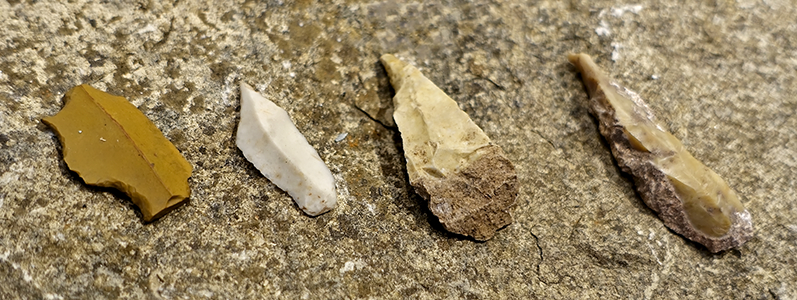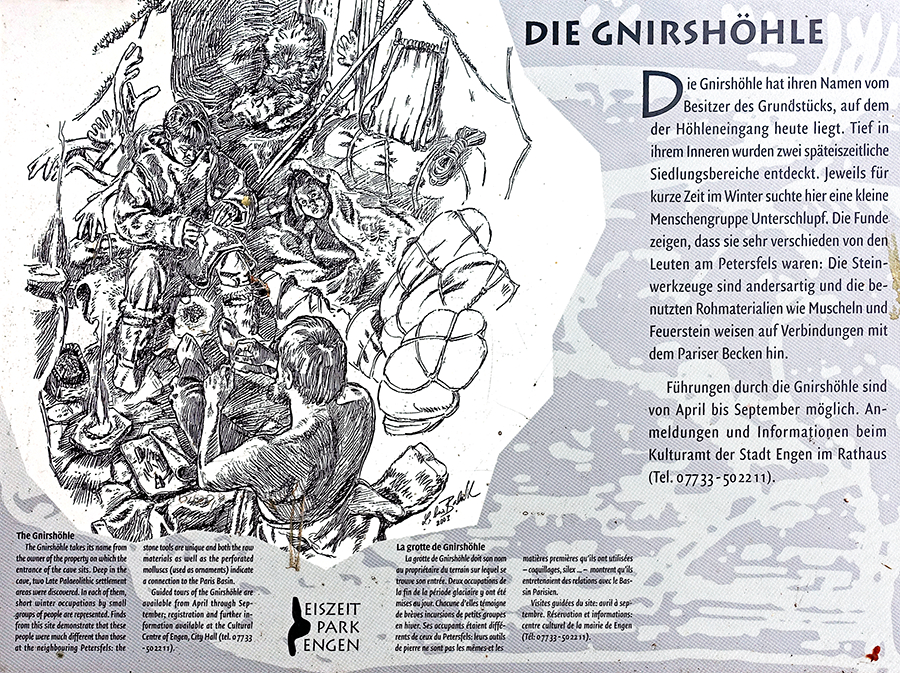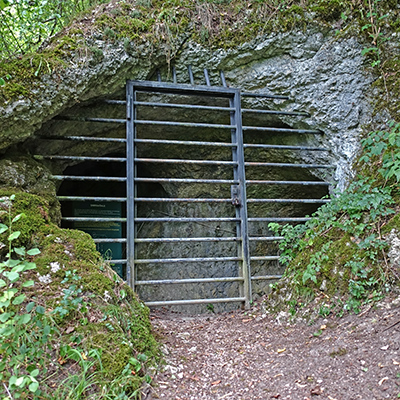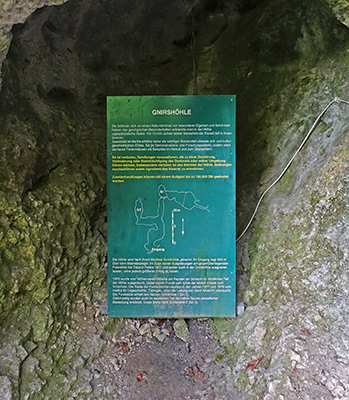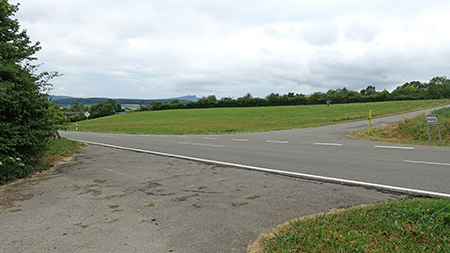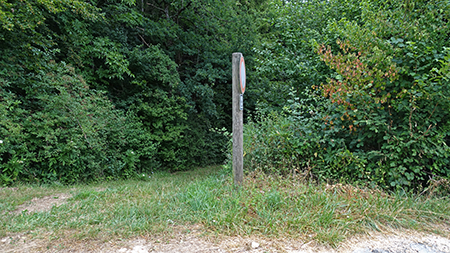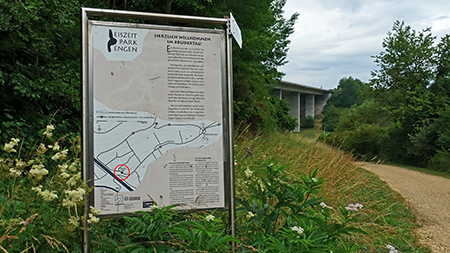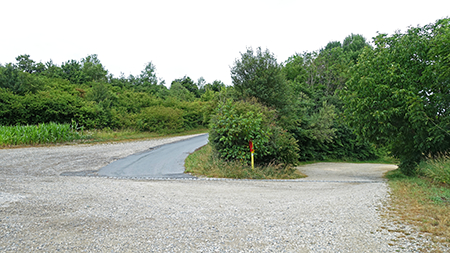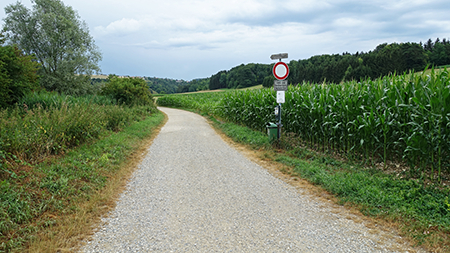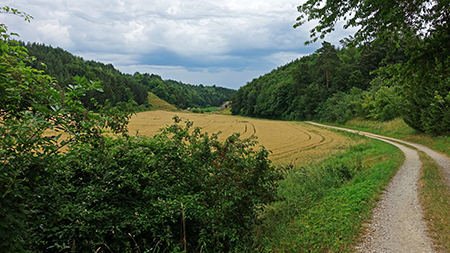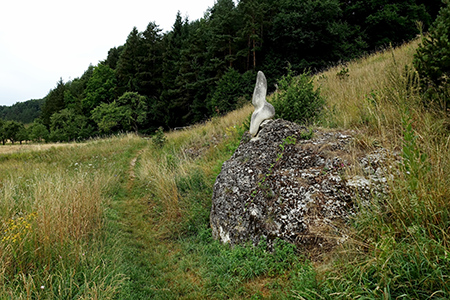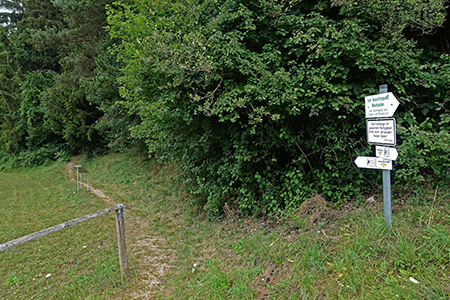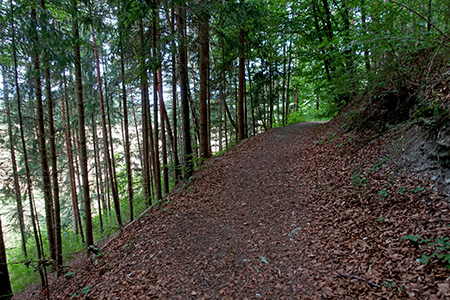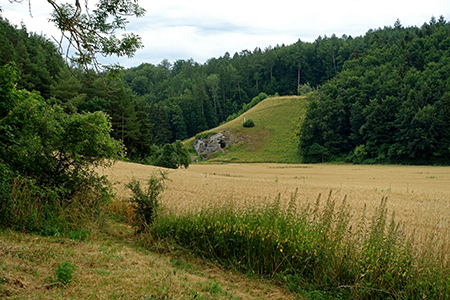Back to Don's Maps
Back to Venus figures from the Stone Age
Venus figures from Petersfels
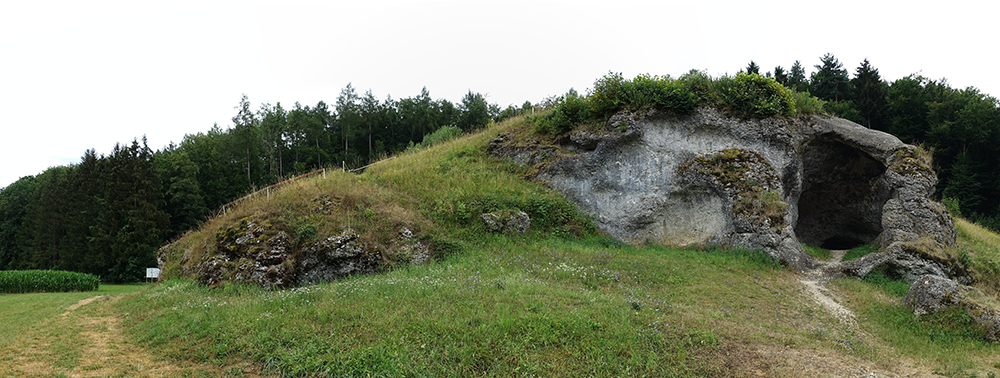
Photo: Don Hitchcock 2018
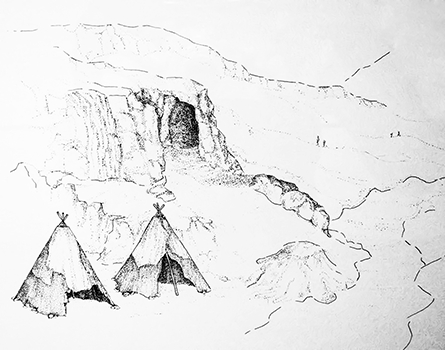
Scene during the late Palaeolithic, circa 12 000 BP, at Petersfels
During the Palaeolithic Age people lived, contrary to the usual conception, only rarely in caves. Rather, they lived in tent-like huts in the open countryside. The inaccurate picture of the people as cave dwellers originated from the fact that the prehistoric finds were mostly in caves which were protected from natural erosion, and therefore they were preserved there more frequently.
In the case of the Petersfeld archaeological site - due to the narrow spatial proportions - the small cave there could have served as a forecourt or workshop rather than as a place of residence. This is also confirmed by the large number of flints, bones and antler remains recovered here.
In addition to tools, there were also small, highly stylised female figures made of jet and animal bones. They testify to the artistic skills of the ice age hunters at the end of the Palaeolithic period.
Artist: Unknown
Rephotography: Don Hitchcock 2008
Source and text: Badisches Landesmuseum Karlsruhe Germany
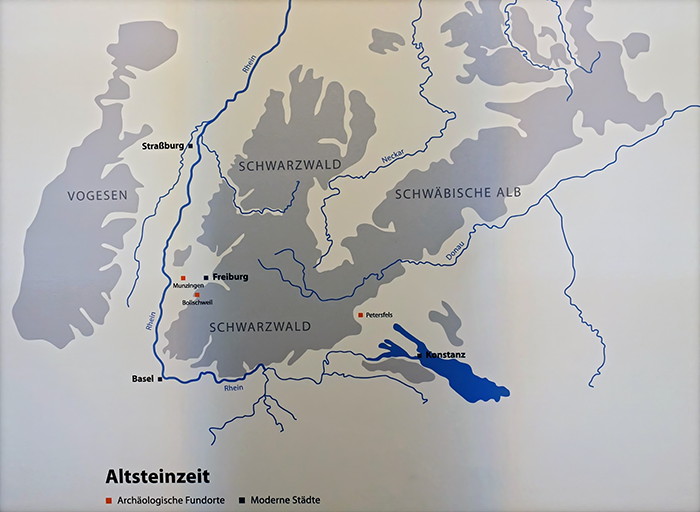
Map showing the position of Petersfels and other important sites in the area.
Rephotography: Ralph Frenken 2018
Source: Display, Archäologisches Museum Colombischlössle, Freiburg, Germany
Panorama of the Petersfels site.
This is a highly detailed painting of the site during the ice ages,
showing the fields of bare rocks, the lack of trees, the stunted appearance of the vegetation, and the lack of modern structures.
It also shows that the cave originally had just one entrance, and would have been substantially warmer, well above freezing, than the conditions outside in winter. Nevertheless, the occupants were there in the cool autumn at least, when they herded groups of reindeer (with substantial reserves of fat to see them through the coming winter), up the Bruder Valley to this narrowing of the valley, where the reindeer could be more easily killed.
Indeed, they appear to have lived mostly in tents outside the cave. It may be that they stayed there the whole winter, before moving to a series of hunting and gathering sites nearby for spring and summer. They could have stored the autumn kill in outdoor caches as frozen meat and rendered fat. They could then pass the winter in relative comfort, in the creation of tools, in carving bone and antler, knapping flint tools, and creating their distinctive jewellery from the local jet.
Murray (1993) writes that Sturdy (1972, 1975) found evidence from the faunal record at the site suggests that reindeer were the predominant prey species during the Late glacial, although horse, fish, birds and small game were also available in some number.
Weniger (1982, 1987), also quoted by Murray (1993), has shown that southwest Germany was characterised by a rich grassland environment during the Lateglacial which supported an extremely rich fauna, with ten species of ungulate and three species of carnivore. While reindeer is indeed the dominant species on many Magdalanian sites, horse-dominated sites are also common, and other species were exploited in smaller numbers.
Photo and artist: Unknown
Rephotography: Ralph Frenken 2018
Text: Don Hitchcock, adapted from various sources
Source: Display, Archäologisches Museum Colombischlössle, Freiburg, Germany
Drawings of thirteen of the Petersfels Venus figures, to scale.
Though this series is not complete, it is a valuable reference for many of the venus figures from Petersfels.
Artist: Not recorded
Rephotography: Don Hitchcock 2018
Source: Adapted from a display at the Engen Municipal Museum and Gallery
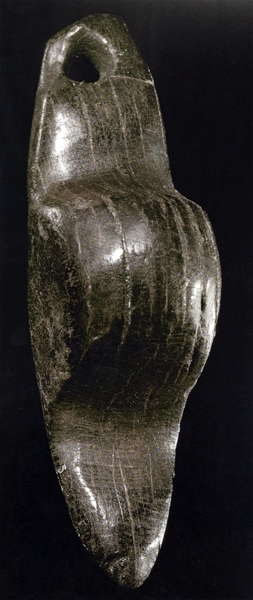
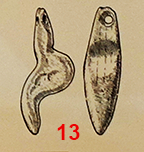
Petersfels Venus, made of jet. This is the most well known of the Petersfels Venus figures.
Photo: Rau et al. (2009)
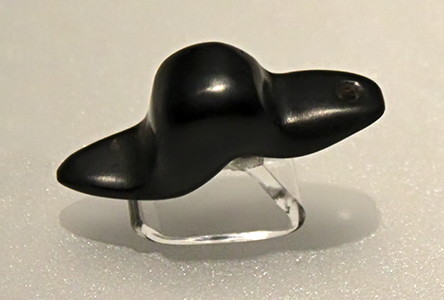

Petersfels venus.
Photo: Ralph Frenken
Source: Facsimile, exhibited at the Archeological Museum Hamburg (Ice Age - The Art of the Mammoth Hunters from 18 October 2016 to 14 May 2017)
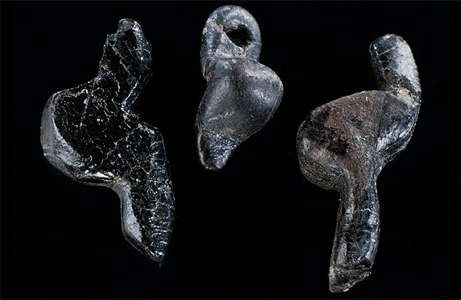
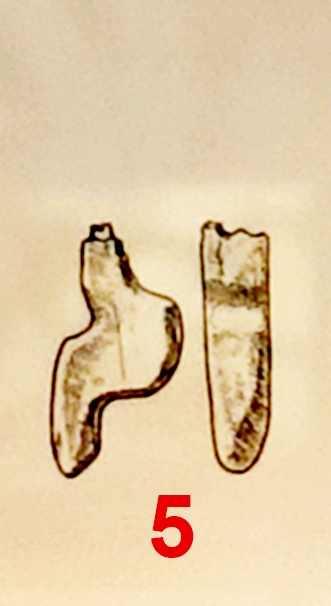
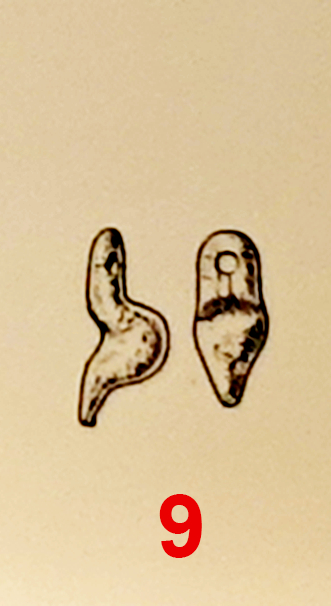
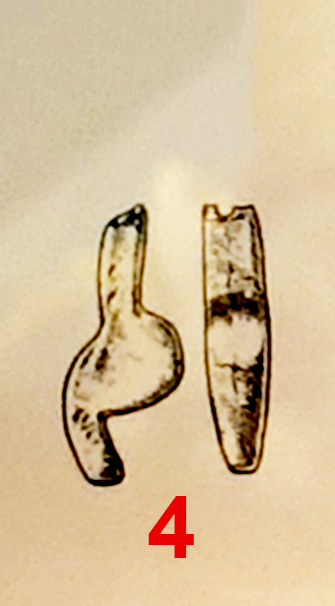
Venus figurines made of jet, from Petersfels, Engen, Germany, some with holes for use as pendants.
Circa 15 000 BP - 12 000 BP
Photo: Yonne Mühleis, LAD, © Archäologisches Landesmuseum Baden-Württemberg
Source: http://www.nationalgeographic.de/aktuelles/ausstellungen/landesausstellung-eiszeit-kunst-und-kultur?imageId=2
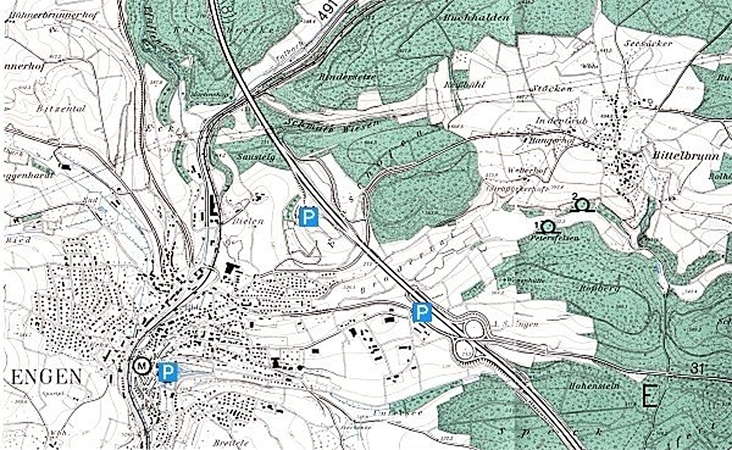
Map of the Engen and Petersfels area.
1- Petersfels
2 - Gnirshöhle
M - Engen Municipal Museum and Gallery, Städtisches Museum Engen + Galerie
Photo: http://www.engen.de/petersfels/anreise.htm
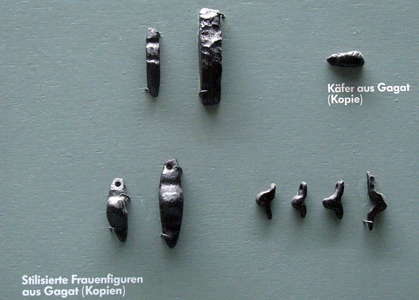
Petersfels Venus figures, made of jet, including the 'beetle' (Käfer).
Facsimiles.
Photo: Don Hitchcock 2008
Source: Badisches Landesmuseum Karlsruhe Germany
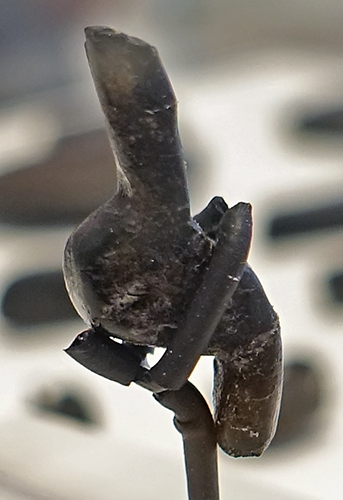
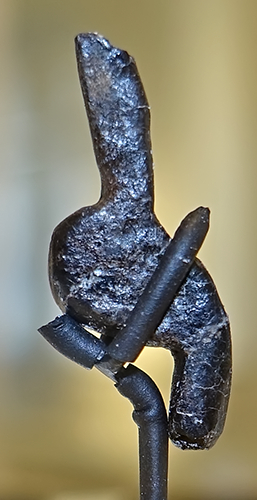

Petersfels Venus figure.
Photo: Don Hitchcock 2018
Source: Original, Archäologisches Museum Colombischlössle, Freiburg, Germany
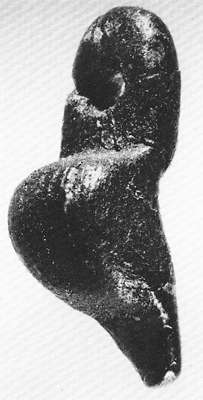

Small Petersfels Venus.
Size: 15 mm, material: Jet
Photo: Müller-Beck and Albrecht (1987)
Source: Original, Archäologisches Museum Colombischlössle, Freiburg, Germany

A range of Petersfels Venuses, all with the same general shape
Photo: Drössler (1967)
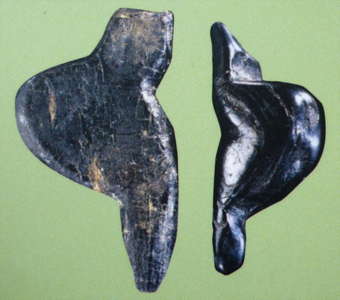
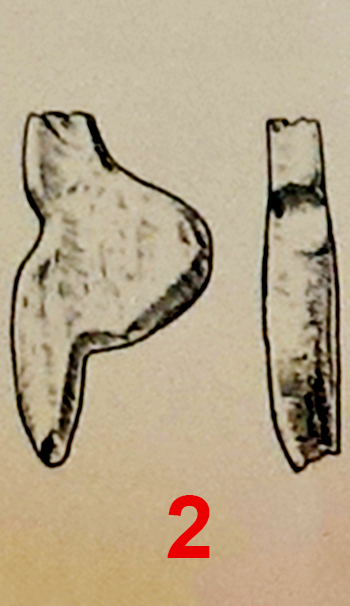
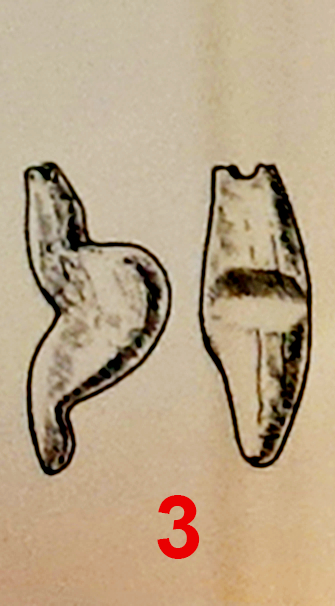
Two of the Petersfels venuses.
Photo: Rau et al. (2009)
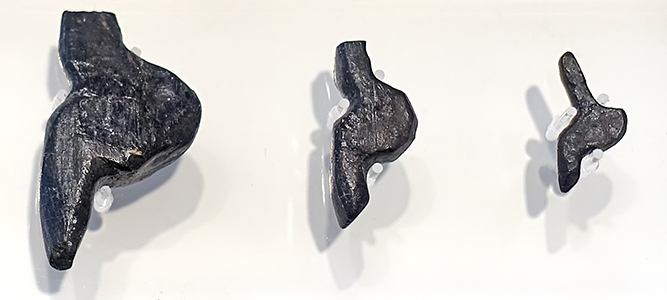


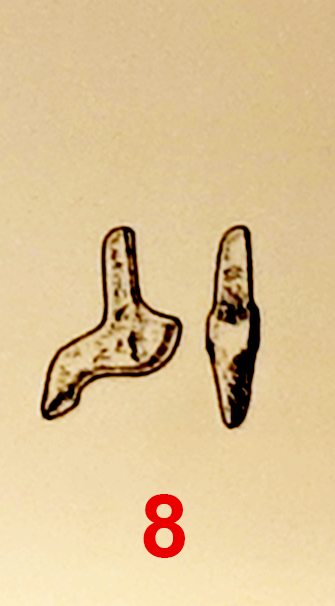
Three venus figures in jet.
From Petersfels bei Engen im Hegau, circa 15 000 BP - 12 000 BP.
Photo: Don Hitchcock 2018
Source: Facsimile, Archäologisches Museum Colombischlössle, Freiburg, Germany
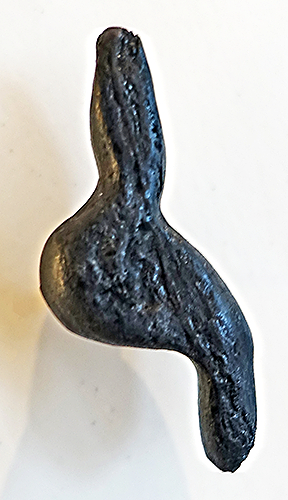

Venus figure in jet.
From Petersfels bei Engen im Hegau, circa 15 000 BP - 12 000 BP.
Photo: Don Hitchcock 2018
Source: Engen Municipal Museum and Gallery
Outcrops of jet in the study area of southwestern Germany, and Magdalenian finds with jet/ lignite objects or ammonites.
Photo and text: after Eriksen (2002)
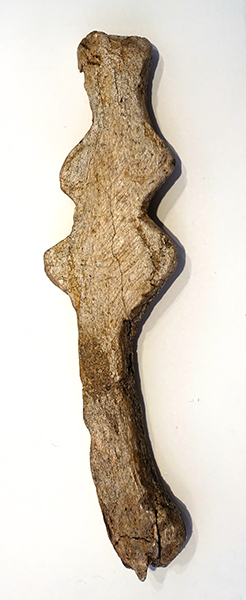
Venus figure.
This appears to be of bone, which is most unusual for a Petersfels venus, and is not of the 'normal' abstract shape.
It is in outline only, but shows a head, breasts, shoulders, abdomen, buttocks, legs, and feet.
From Petersfels bei Engen im Hegau, circa 15 000 BP - 12 000 BP.
Photo: Don Hitchcock 2018
Source: Original, Archäologisches Museum Colombischlössle, Freiburg, Germany
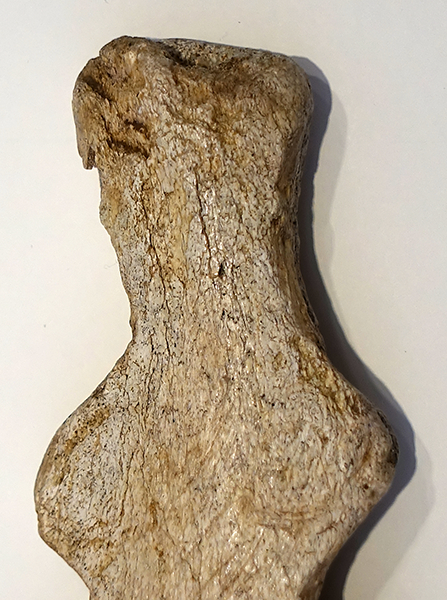
Venus figure.
Close up.
From Petersfels bei Engen im Hegau, circa 15 000 BP - 12 000 BP.
Photo: Don Hitchcock 2018
Source: Original, Archäologisches Museum Colombischlössle, Freiburg, Germany
Whistle.
From Petersfels bei Engen im Hegau, circa 15 000 BP - 12 000 BP.
Photo: Don Hitchcock 2018
Source: Original, Archäologisches Museum Colombischlössle, Freiburg, Germany
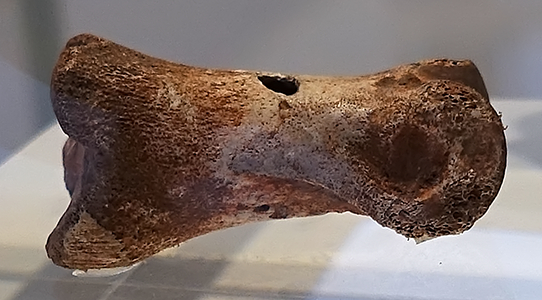
Whistle.
From Petersfels bei Engen im Hegau, circa 15 000 BP - 12 000 BP.
Photo: Don Hitchcock 2018
Source: Original, Archäologisches Museum Colombischlössle, Freiburg, Germany
Spear points, one with bevel and grooves to help attachment of adhesive.
From Petersfels bei Engen im Hegau, circa 15 000 BP - 12 000 BP.
Photo: Don Hitchcock 2018
Source: Original, Archäologisches Museum Colombischlössle, Freiburg, Germany
Needles.
From Petersfels bei Engen im Hegau, circa 15 000 BP - 12 000 BP.
Photo: Don Hitchcock 2018
Source: Original, Archäologisches Museum Colombischlössle, Freiburg, Germany
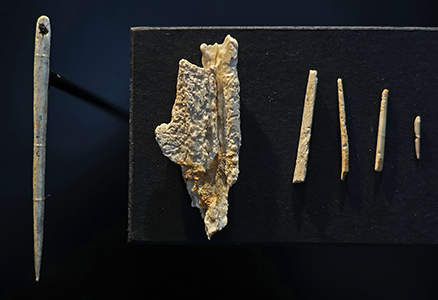
Left to right:
Sewing needle, bone.
Provenance: Petersfels, Engen-Bittelbrunn, Kreis Konstanz.
Needle blank with negatives of sewing needles, bone.
Four sewing needles, bone.
Provenance: Felsställe, in the Kirchener Tal near Ehingen-Mühlen, 30 km southwest of Ulm.
Photo: Don Hitchcock 2018
Source: Landesmuseum Württemberg, Stuttgart
Pendant, with a row of near-identical horse heads engraved on it.
The piercing for a cord was broken in ancient times.
From Petersfels bei Engen im Hegau, circa 15 000 BP - 12 000 BP.
Photo: Don Hitchcock 2018
Source: Facsimile, Archäologisches Museum Colombischlössle, Freiburg, Germany
Note that the pendant has an irregular series of longitudinal score marks on one edge as shown here.
From Petersfels bei Engen im Hegau, circa 15 000 BP - 12 000 BP.
Photo: Don Hitchcock 2018
Source: Facsimile, Archäologisches Museum Colombischlössle, Freiburg, Germany
Additional text: Don Hitchcock
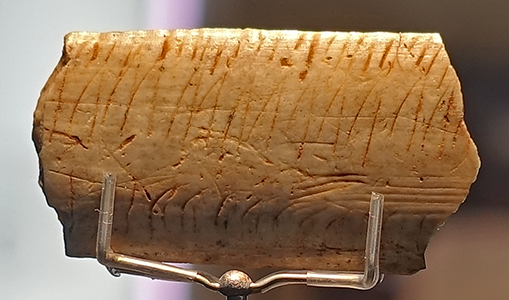
Dancing women, reindeer rib, Petersfels, Engen-Bittelbrunn,Kreis Konstanz, Magdalenian, circa 14 000 BP - 12 000 BP.
Photo: Don Hitchcock 2018
Source and text: Landesmuseum Württemberg, Stuttgart
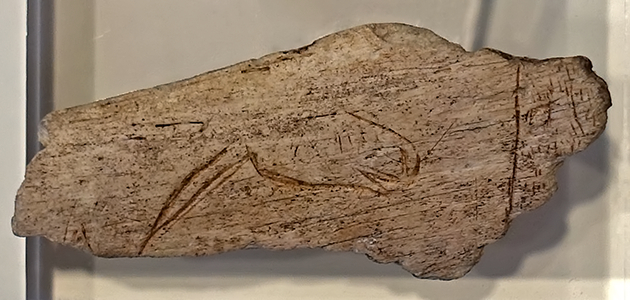
Bone with a partial horse head engraved on it on the left, with the front of a horse head on the right, facing it.
From Petersfels bei Engen im Hegau, circa 15 000 BP - 12 000 BP.
Photo: Don Hitchcock 2018
Source: Original, Archäologisches Museum Colombischlössle, Freiburg, Germany
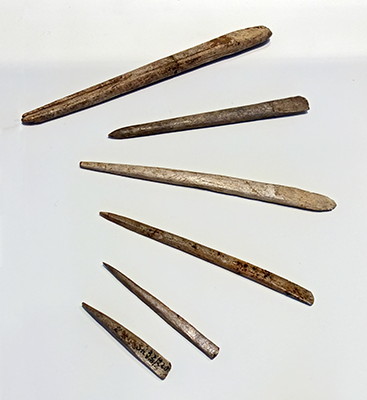
Spear points, most with a double bevel, used to attach the spear point to the shaft of the dart, which was thrown with an atlatl.
From Petersfels bei Engen im Hegau, circa 15 000 BP - 12 000 BP.
Photo: Ralph Frenken 2018
Source: Original, Archäologisches Museum Colombischlössle, Freiburg, Germany
Spear points from the set above.
From Petersfels bei Engen im Hegau, circa 15 000 BP - 12 000 BP.
Photo: Don Hitchcock 2018
Source: Original, Archäologisches Museum Colombischlössle, Freiburg, Germany
Pierced baton, with two holes and with double chevrons and parallel lines engraved on the shaft.
From Petersfels bei Engen im Hegau, circa 15 000 BP - 12 000 BP.
Photo: Don Hitchcock 2018
Source: Original, Archäologisches Museum Colombischlössle, Freiburg, Germany
Close up of the holed end of the two holed pierced baton above.
From Petersfels bei Engen im Hegau, circa 15 000 BP - 12 000 BP.
Photo: Don Hitchcock 2018
Source: Original, Archäologisches Museum Colombischlössle, Freiburg, Germany
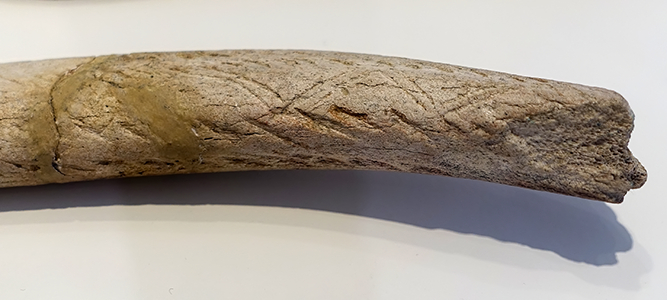
Close up of the engraved end of the two holed pierced baton above.
From Petersfels bei Engen im Hegau, circa 15 000 BP - 12 000 BP.
Photo: Don Hitchcock 2018
Source: Original, Archäologisches Museum Colombischlössle, Freiburg, Germany

Pierced baton, with three complete holes and one partial hole remaining.
From Petersfels bei Engen im Hegau, circa 15 000 BP - 12 000 BP.
Photo: Don Hitchcock 2018
Source: Original, Archäologisches Museum Colombischlössle, Freiburg, Germany
This is labelled as a decorated rod, but there is a curious shaping at the right end in this image which looks like the remains of a hole, as in a pierced baton.
Yet the rod is not really wide enough at that point to support much stress being placed on the hole. Pierced rods are an enigma, with multiple original usages proposed, but including the straightening of spear shafts.
From Petersfels bei Engen im Hegau, circa 15 000 BP - 12 000 BP.
Photo: Don Hitchcock 2018
Source: Original, Archäologisches Museum Colombischlössle, Freiburg, Germany
Drawing: Mauser (1968)
This appears to be a section of a mammoth tusk, undecorated.
From Petersfels bei Engen im Hegau, circa 15 000 BP - 12 000 BP.
Photo: Don Hitchcock 2018
Source: Original, Archäologisches Museum Colombischlössle, Freiburg, Germany
Lissoir, or polisher, used to turn hides into leather.
From Petersfels bei Engen im Hegau, circa 15 000 BP - 12 000 BP.
Photo: Don Hitchcock 2018
Source: Original, Archäologisches Museum Colombischlössle, Freiburg, Germany
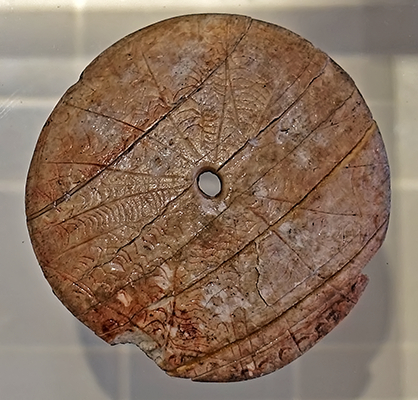
Rondelle, with radii carved into the surface. Other engraved decorations include small chevrons and arcs between the radii.
( I believe that rondelles are weights for spindles used for spinning yarn. Some sources say that they are decorations or buttons to be sewn onto clothing, but they are much too big to be a button, and if they were sewn onto a garment there would normally be two holes for ease of attachment - Don )
From Petersfels bei Engen im Hegau, circa 15 000 BP - 12 000 BP.
Photo: Don Hitchcock 2018
Source: Original, Archäologisches Museum Colombischlössle, Freiburg, Germany
Harpoon points.
( note the 'bump' on the base of the top harpoon, leading to a cone shaped section, and the similar asymmetric bumps and flatter cone on the lower harpoon. The cones fitted into a socket on the shaft of the harpoon, and the bumps were there to facilitate the tying of the harpoon to the shaft, which presumably had similar bump/s, or perhaps a groove, to secure the twine or sinew onto the shaft - Don )
From Petersfels bei Engen im Hegau, circa 15 000 BP - 12 000 BP.
Photo: Don Hitchcock 2018
Source: Original, Archäologisches Museum Colombischlössle, Freiburg, Germany
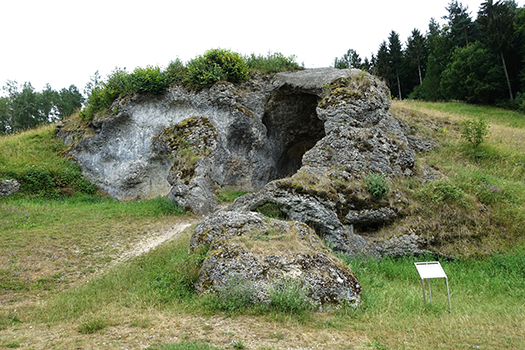
The Petersfels site, near Engen in Germany.
It is one of the most important Palaeolithic sites in Central Europe with an enormous number of important artefacts.
It was a settlement site of the Magdalenian (late Upper Paleolithic), with many layers, towards the end of the last ice age, during the period 15 500-13 500 years BP. The main activity here was reindeer hunting in autumn.
Excavations from 1927 to 1932 were by E. Peters and from 1974 to 1979 by G. Albert.
The area is now protected, and further excavation is only possible with the permission of the National Monuments Office.
Photo: Don Hitchcock 2018
Text: Adapted from http://www.engen.de/petersfels/anreise.htm, and the sign in the image at left.
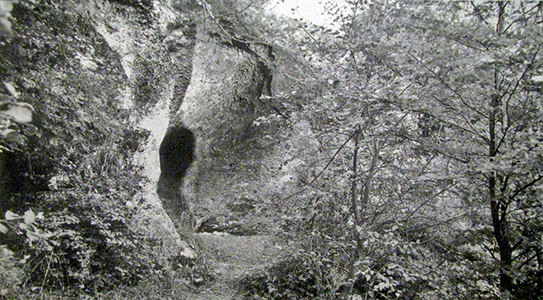
The Petersfels cave, before any excavations were made.
Photo: Not recorded
Rephotography: Don Hitchcock 2008
Source: Badisches Landesmuseum Karlsruhe Germany
Peters conducted a trial excavation on 17th and 18th August 1927. He notes:
The survey showed that the moist cave floor, covered only with leaves, was fairly even and completely clean, a surprising but pleasing fact for an ancient speleologist working in the Westphalian cave area. After the northern entrance to the cave, the floor rose slightly. The main forecourt on the north side was occupied by two very thick beech trees, while at the side of the northwest forecourt a thicker beech was also growing. I decided to dig two test trenches in the cave, with a third trench perpendicular to the overhang and a fourth trench on the eastern foot of the rock about 2m above the bottom of the valley, in order to exhaust all possibilities of detecting a layer of culture. The trenches were made only 40 cm wide to avoid unnecessary layer disturbances. The two trenches in the cave at a depth of 30 cm produced a grey, completely dry layer of minerals with small pieces of bone, some flint flakes and debitage. From the overhang ditch, I was able to extract a reindeer antler at 40 cm below the surface, as well as other pieces of bone, and in the last trench I found bone and flint pieces at a depth of 2 metres, including a burin.Text above: Peters (1930)
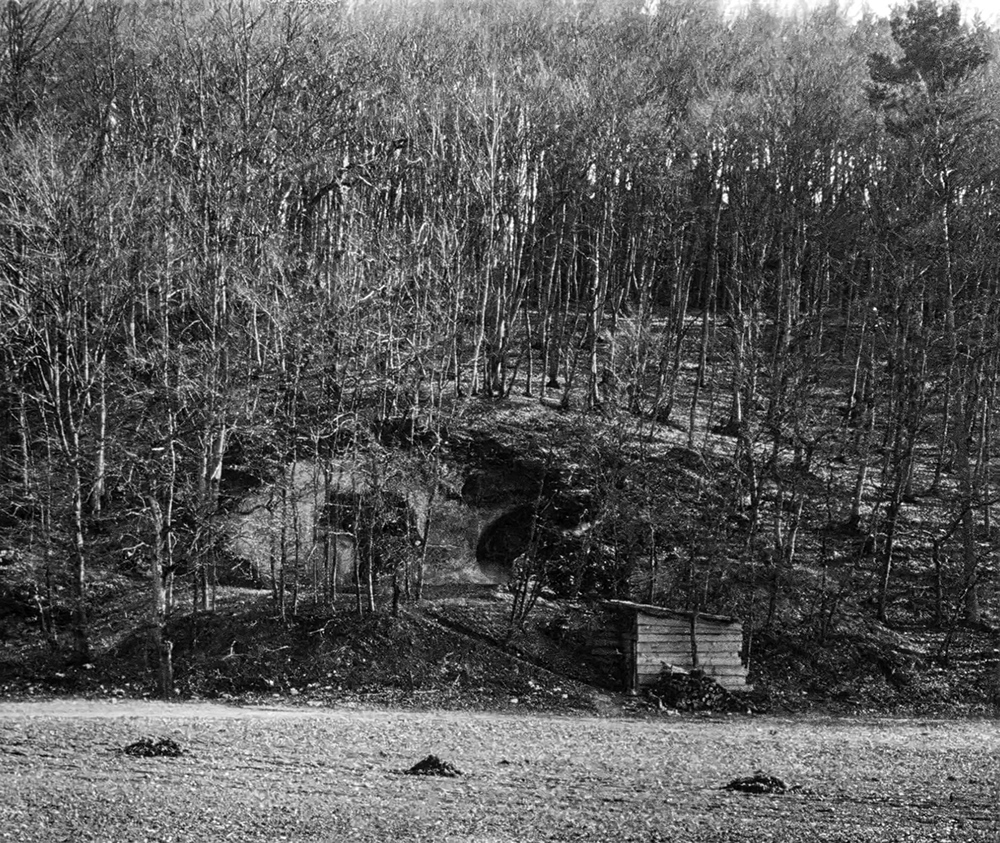
The Petersfels site not long after preparations were first made by Peters for its excavation. Peters had already got rid of the dense tree and shrub cover which had obscured the cave and the area around it.
If we compare this photo with the photos of the site at the present time, we can see that there was a huge amount of earth and rocks removed during the course of the excavation of the site.
In particular, the cave was, originally, a cave in a hillside, with only one entrance, rather than the two entrances which can now be seen by present day visitors. All the trees on the hillside have now been removed, in order to recreate the ice age conditions, when there were no trees.
The small hut was provided by the city of Engen for the use of the excavators upon the request of Eduard Peters, and was able to be locked and heated, and was invaluable during the excavations.
Photo and text: Peters (1930)
Additional text: Don Hitchcock
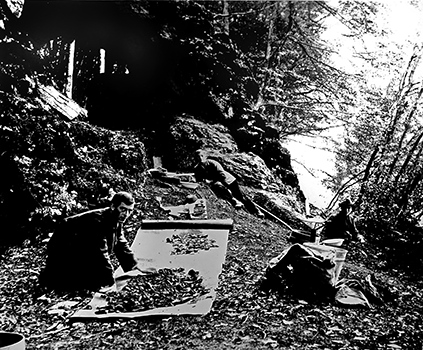
This photograph is from the sixth day of the first excavation at Petersfels, on the 10th October 1927. Peters employed three assistants from the nearby village of Bittelbrunn.
Here the three assistants have spread out the finds, in order to assess and catalogue them. At first the finds were sieved with water to find the smallest items, but this was abandoned when it was realised that there was not sufficient local supply in the dry Bruder Valley to meet the demands of such a method, however desirable it might be. Peters found a few other bones after rain, showing the benefits of water, but decided that in any case, wet sieving would almost certainly have destroyed many of the jet venus figures found.
Photo: not recorded
Rephotography and text: Don Hitchcock 2018
Source: Display at the Engen Municipal Museum and Gallery
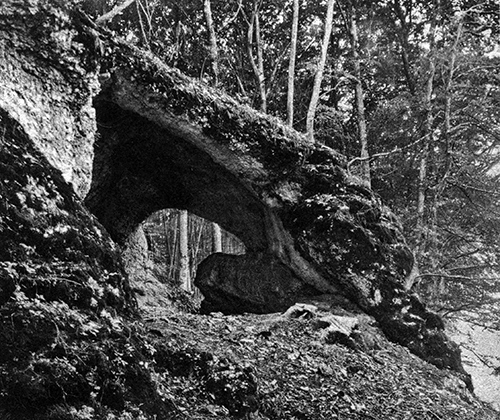
A short time after excavation commenced on 5th October 1927 (although it was autumn, the leaves were still on the deciduous trees, mostly beech), a huge amount of earth had been excavated, so that the extra hole, covered with overburden originally, can now be seen.
At this stage, little or no material had been excavated from the floor of the cave.
Photo: Peters (1930)
Text: Don Hitchcock
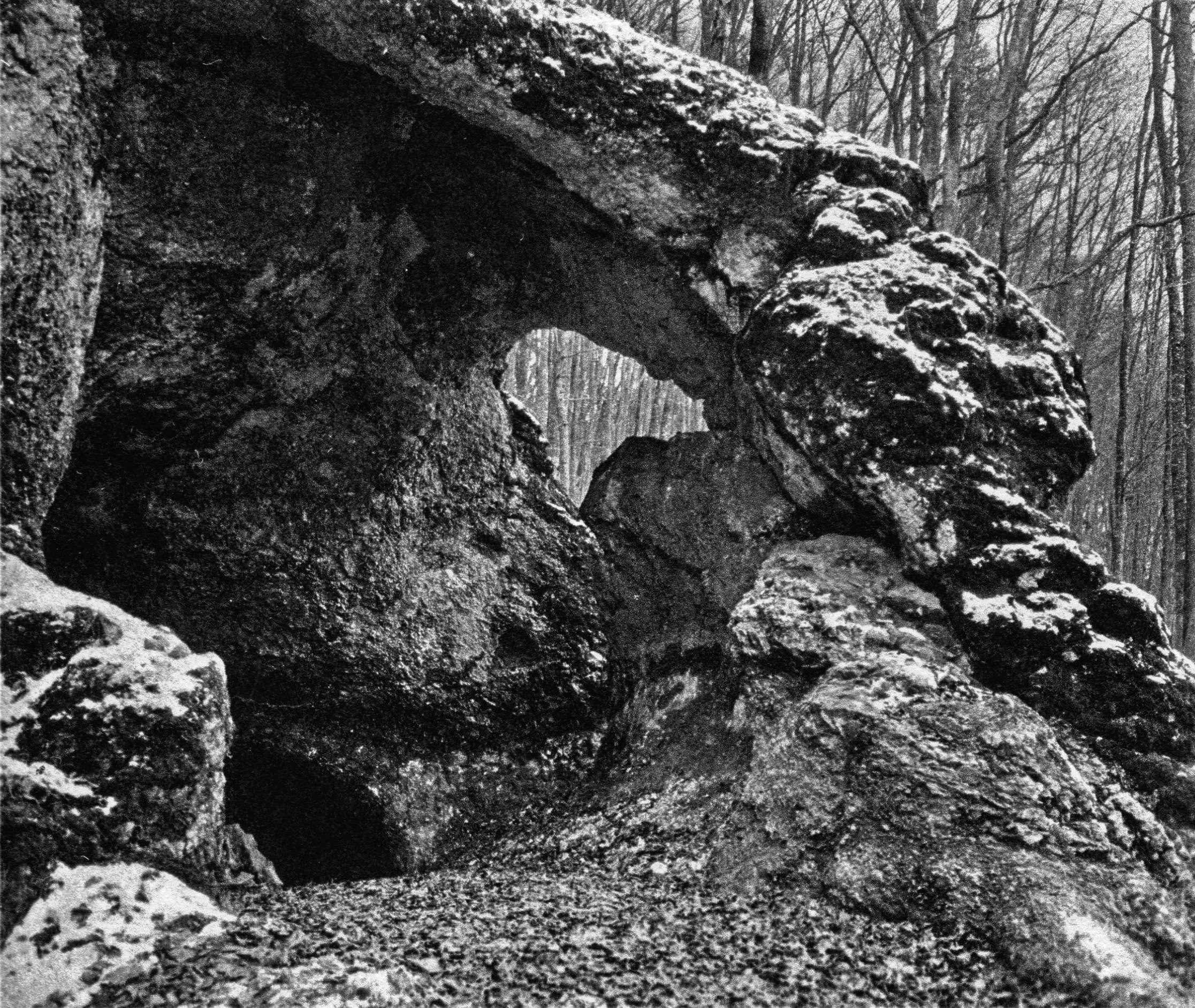
A little later, the leaves had fallen, and a great deal of material had been excavated from the interior of the cave.
The original surface height can be judged from the top of the dark colour on the rear wall of the cave.
Photo: Peters (1930)
Text: Don Hitchcock
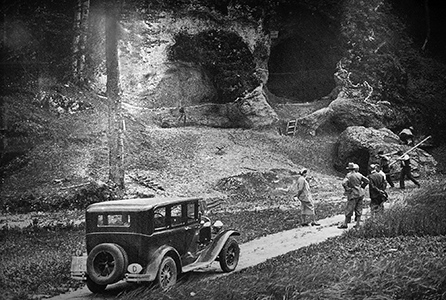
The Petersfels site in 1932, with visitors from Bittelbrunn, in formal clothes, talking to Peters about the progress being made, while his assistants continue with their work.
Photo: not recorded
Rephotography and text: Don Hitchcock 2018
Source: Display at the Engen Municipal Museum and Gallery
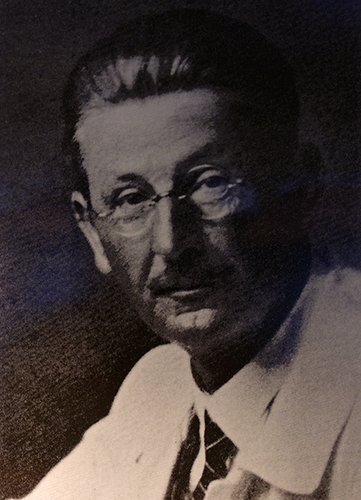
Eduard Peters in 1946.
Photo: not recorded
Rephotography: Ralph Frenken 2020
Source: Display at the Engen Municipal Museum and Gallery
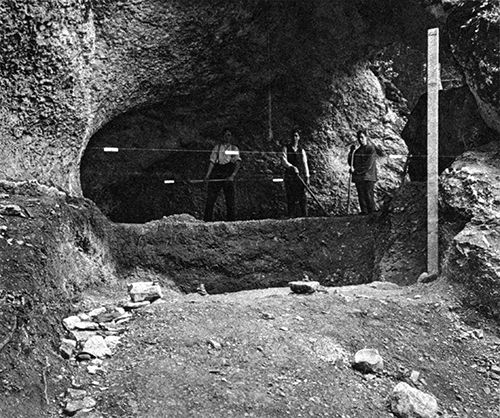
By this point, the excavation within the cave and in front of it was well under way.
It was found necessary to put up a couple of lines with white cloth to provide a visual marker of the drop off to the excavation below, to avoid accidents.
Modern excavations are completed using very fine tools, and painstakingly obtain the smallest fragments. All material is washed through fine sieves. Peters used hoes and shovels, and pointed trowels, but was not able to do fine sieving with water. Thus many smaller items were missed.
Photo: Peters (1930)
Text: Don Hitchcock
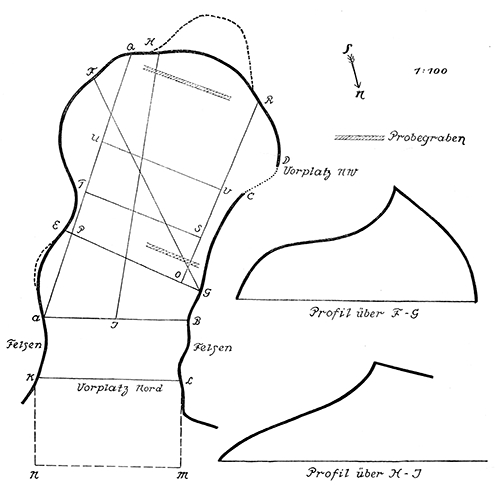
Excavation surfaces (merged into a horizontal plane) and cave profiles.
Photo and text: Peters (1930)
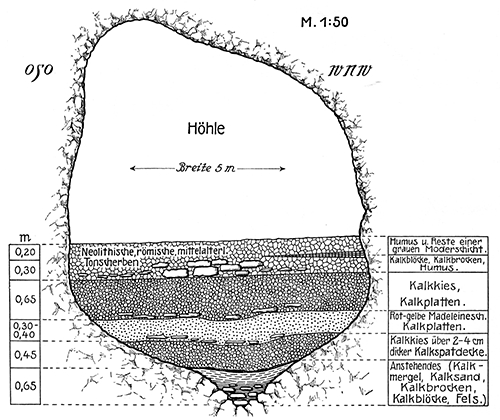
Cross-section under the current outer edge of the cave ceiling (as in the previous diagram), somewhat idealised.
Layers: (thickness is given)
20 cm: Humus and the remains of a grey mouldy layer.
30 cm: Limestone blocks, chalk, and humus.
65 cm: Limestone gravel and slabs/plates.
30 to 40 cm: Reddish - yellow Magdalenian layer, limestone slabs/plates.
45 cm: Lime gravel over a 2 - 4 cm thick lime layer.
65 cm: Bedrock (limestone, calcareous sand, limestone, limestone blocks, rock.)
Photo and text: Peters (1930)
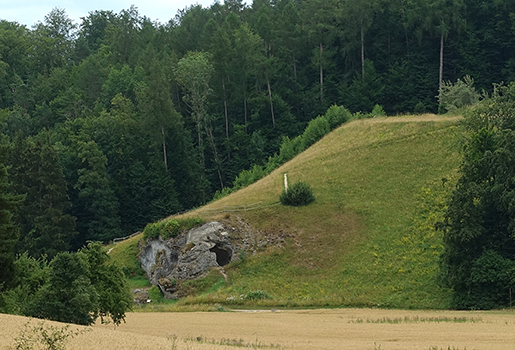
The Petersfels site today, with the side entrance visible. The area has been cleared of vegetation, and a bog and late glacial vegetation has been established so that visitors can get a feel for how the site was towards the end of the last ice age.
Photo: Don Hitchcock 2018
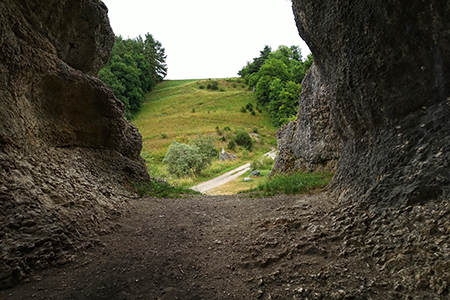
Gallery of photos of the Petersfels cave.
( The blue line on the wall of the cave visible in some photos may be the original level of the surface before excavations began - Don )
Photo: Don Hitchcock 2018
Discovery of the Petersfels site and the first excavationsText above: Notice Board at the Petersfels site.
Archaeological research in the Bruder Valley had already begun by the 1920s. The first acknowledged - and for its time very modern - excavations began on 17th August 1927. The retired postmaster, Eduard Peters, systematically swept the valley for caves, first discovering the Gnirshöhle and later Petersfels, which was named after him for the work he had done on it.
Peter's research at Gnirshöhle (previously known as Hohlefels) was initially inconclusive. However, results from across the valley at the Petersfels cave were quite different. Here, Peters discovered the remains of Old Stone Age occupations. While the town of Engen initially showed little interest in the site, Peters used his own and other financial resources to begin his archaeological excavations in October of 1927.
Within two excavation seasons, from 5th October to 12th November, 1927, and 15th to 28th March, 1928, Peters and his three assistants from the nearby village of Bittelbrunn had almost completely excavated the cave and its entrance.
In 1930, the finds were put on display and were received with much public excitement. The city of Engen subsequently offered assistance to Peters' third season, which lasted from 9th May to 16th July, 1932. During this season, the entire area in front of the cave to the base of the valley was investigated.
Peters' excavation methods and results
Peters' excavation methods were very progressive for his time. He divided the area of excavation into five large zones, which he dug separately, moving a total of 460 m3 of earth in three seasons. The sediment from the excavations was spread onto a parachute canvas and sorted for finds. Peters even attempted to water-screen the excavated material, however this process was abandoned due to water shortages in the valley.
Like many researchers of his time, Peters assumed that people regularly visited the site many times during a period near the end of the last Ice Age. Multiple occupations had led to the creation of a single find-horizon, in which Peters and his colleagues recovered 1500 kg of Ice Age animal bones, 50 000 stone artefacts and 1 000 bone and antler tools. Finds from the base of the valley were interpreted as having originated in the cave and subsequently moved down the slope through erosion.
The discovery of fine prehistoric artwork brought great fame to the site.
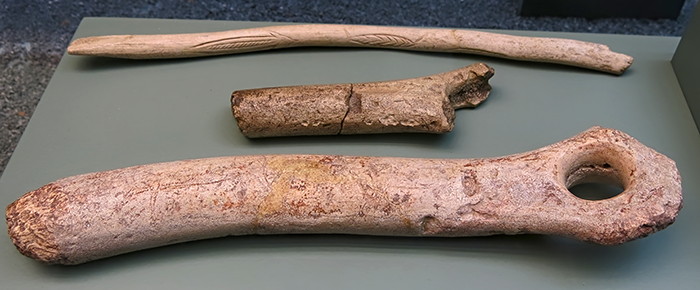
Reindeer antler tools from Petersfels, ca 14 000 BP.
(top) Reindeer antler carved as a rod, with fish-like creatures carved on it. Inv. Dep No. 2008/3
(middle) Broken reindeer antler pierced baton.
(bottom) Reindeer antler pierced baton, engraved with two reindeer following each other. Reindeer were a favourite game animal of the hunters of Petersfels. Inv. Dep No. 2008/2
Spear straighteners are the most commonly decorated objects of the Magdalenian.
From Petersfelshohle in Engen-Bittelbrunn.
Photo: Don Hitchcock 2015
Source: Original, Badisches Landesmuseum Karlsruhe Germany
This rod with a bevelled base carries engravings which show fish-like creatures.
From Petersfelshohle in Engen-Bittelbrunn.
Catalog: Inv. Dep No. 2008/3
Photo: (top): Ralph Frenken 2020
Photo (centre and bottom): Don Hitchcock 2015
Source: Original, Badisches Landesmuseum Karlsruhe Germany
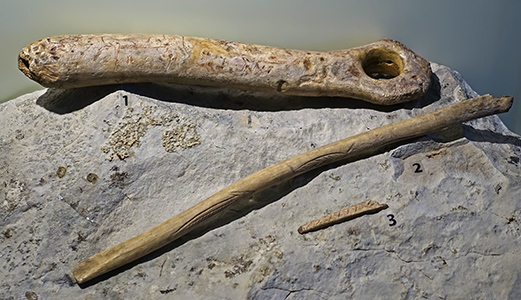
Baton percé, decorated rod, and pendant, facsimiles.
Photo: Don Hitchcock 2018
Source: Display at the Engen Municipal Museum and Gallery
Baton percé, facsimile.
Photo: Ralph Frenken 2020
Source: Display at the Engen Municipal Museum and Gallery
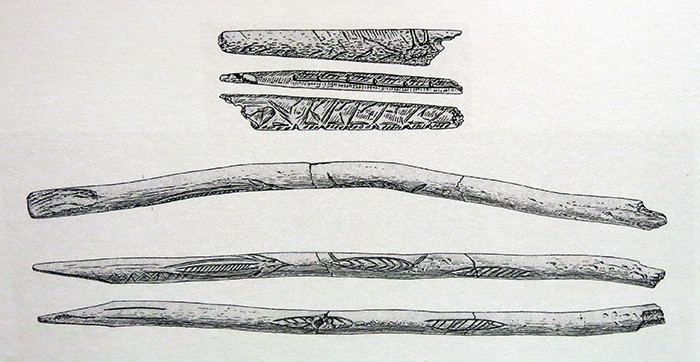
Drawing of the decorated rod, with another section of decorated antler above it.
Artist: Unknown, but probably from Peters (1930)
Photo: Don Hitchcock 2015
Source: Original, Badisches Landesmuseum Karlsruhe Germany
Broken pierced baton.
From Petersfelshohle in Engen-Bittelbrunn.
Photo: Don Hitchcock 2015
Source: Original, Badisches Landesmuseum Karlsruhe Germany
Close up of a reindeer antler pierced baton, engraved with two reindeer following each other. Reindeer were a favourite game animal of the hunters of Petersfels.
Pierced batons are the most commonly decorated objects of the Magdalenian.
From Petersfelshohle in Engen-Bittelbrunn.
Bittelbrunn is a district of Engen in the district of Konstanz in Baden-Württemberg.
Catalog: Inv. Dep No. 2008/2
Photo: Don Hitchcock 2015
Source: Original, Badisches Landesmuseum Karlsruhe Germany
Drawing of the carving on the pierced baton above.
Mauser (1968) describes this piece thus:
The famous reindeer depiction of Petersfels is unique in the German find area. It is quite admirable with what confidence and elegance the glacial artist cut his lines into the hard material and engraved the pair of reindeer on the baton percé. Both the front animal, the reindeer cow, and the bull behind are rendered in an astonishingly true-to-life manner with simple strokes, even for details, such as the coat markings and hair. This is not a simple copy of nature before us, instead we can clearly recognise the individual hand of the artist. It goes without saying that the creator of this little work of art must have had an excellent power of observation.
Creator of the drawing: Unknown
Source and text: Mauser (1968)
Pierced baton showing two reindeer following each other, an enhanced facsimile of the original above.
From Petersfels bei Engen im Hegau, circa 15 000 BP - 12 000 BP.
Photo: Don Hitchcock 2018
Source: Facsimile, Archäologisches Museum Colombischlössle, Freiburg, Germany
Close up of the handle, including the first reindeer.
From Petersfels bei Engen im Hegau, circa 15 000 BP - 12 000 BP.
Photo: Don Hitchcock 2018
Source: Facsimile, Archäologisches Museum Colombischlössle, Freiburg, Germany
Close up of the handle, including the second reindeer.
From Petersfels bei Engen im Hegau, circa 15 000 BP - 12 000 BP.
Photo: Don Hitchcock 2018
Source: Facsimile, Archäologisches Museum Colombischlössle, Freiburg, Germany
Close up of the hole of the bâton percé.
From Petersfels bei Engen im Hegau, circa 15 000 BP - 12 000 BP.
Photo: Don Hitchcock 2018
Source: Facsimile, Archäologisches Museum Colombischlössle, Freiburg, Germany
Another view of the pierced baton, from a slightly lower viewpoint, showing more of the lower parts of the legs.
From Petersfels bei Engen im Hegau, circa 15 000 BP - 12 000 BP.
Photo: Don Hitchcock 2018
Source: Facsimile, Archäologisches Museum Colombischlössle, Freiburg, Germany
The Autumn Hunt
At the end of the ice age, reindeer passed through the Bruder Valley every autumn on their way to the snow-free highlands of the Alb. This situation was exploited by the prehistoric hunters, who drove the animals away from their route into side valleys, towards narrow spaces, such as Petersfels. Once cornered, the animals were taken down with a combination of spears, bolas or ropes with wooden hooks, which entangled themselves between the antlers.
Wild horses were also hunted, while smaller game, such as snow hare and white grouse (ptarmigan) were caught with traps. Hunted animals were processed at, or very close to, the site. A brisk wind from the east as well as an annual mean temperature of about 6° C colder than today kept flies and the smell of decomposing animal waste within limits.
Artist: © Libor Balák
Rephotography: Don Hitchcock 2018
Source and text: Notice board, Petersfels site
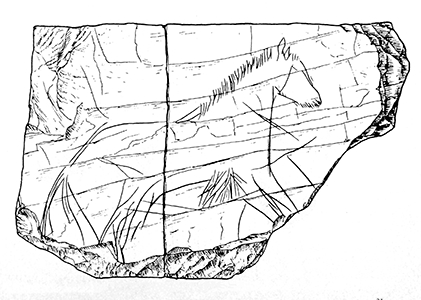
Drawing of an engraving of a horse, from Petersfels.
Source: Mauser (1968)
Engraving of a horse, shown with black and white inverted on the right.
Photograph of the original: Peters (1930)
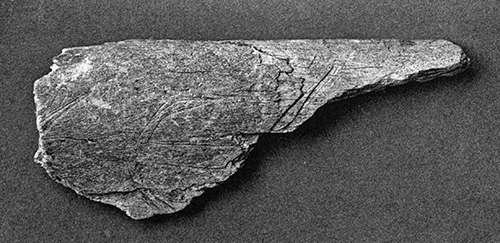
Engraving on bone.
Photograph of the original: Peters (1930)
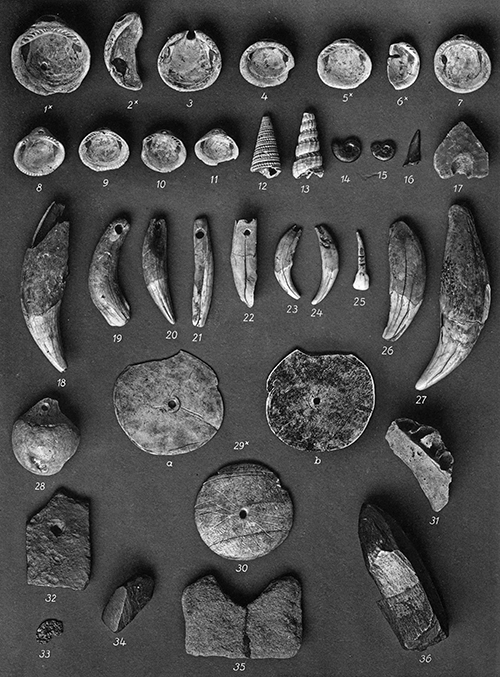
1 to 11: Bivalves.
12, 13: Turret shells.
14, 15: Fossil ammonites with a central hole from the Swabian Jura. Ammonites often possess a natural central hole, but in fact it is also very easy to pierce the central part of an ammonite by pressing a small flint tip against it.
16: Shark tooth.
17: Unknown.
18 to 24: Carnivore canine teeth, possibly from cave bears.
25: Deer tooth.
26, 27: Carnivore canine teeth.
28: Pendant, drilled.
29: Rondelle, made from a scapula.
30: Rondelle, engraved, made from mammoth ivory.
31: Unkown
32: Pendant
33: Unknown.
34: Possibly a piece of jet in the roughed out stage for making a venus figure.
35: Unknown.
36: Possibly a piece of jet in the roughed out stage for making a venus figure.
Photograph of the originals: Peters (1930)
Identifications: Don Hitchcock
Additional text: Eriksen (2002)
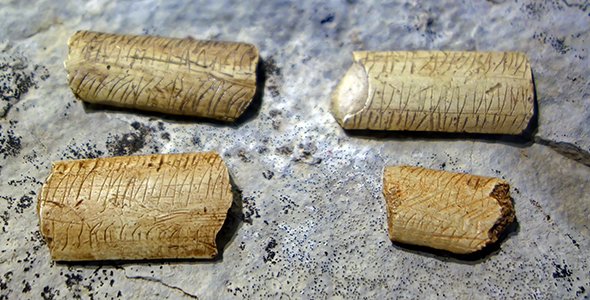
Sections of bone with engravings of stylised women.
Photo: Ralph Frenken 2020
Source and text: Facsimiles, display at the Engen Municipal Museum and Gallery
Recent Excavations in the Bruder Valley
WWII brought about a hiatus in research at Petersfels until Peter Florian Mauser's publication generated interest in the site amongst the scientific community. Test excavations were once again undertaken in the 1960s. Small trenches at the base of the valley, exposed rocky ridges, which had preserved Ice Age sediments from erosion. At the same time, many amateur archaeologists, too, began their own excavations at Petersfels - without permission - generating many large collections of finds.
The excavations of the 1970s
In order to combat the unnecessary destruction of the prehistoric monument through theft excavations, the local government decided to conduct reconnaissance excavations in 1974. The goal was both the identification of intact find-horizons and the excavation of preserved sediments. From 1974 to 1979, Gerd Albrecht of the University of Tübingen was the local director of excavations at Petersfels. One of the first results of this work was the discovery that the actual location of the Ice Age hunting camps was on the valley floor; this stands in contrast to Peters who had considered these layers to be washed out cave sediments.
The City of Engen additionally financed the analyses of the large amount of sediments in the spoil piles, which Peters had excavated. Samples were taken and sieved and gave evidence of the original richness of artefacts, missed by the old excavations. After amateur archaeologists cut trenches into sediments at the Gnirshöhle, the University of Tübingen conducted scientific excavations in 1977 and 1978.
Modern methods of excavation
Peters' methods of excavation may seem a bit ill-considered and hasty by today's standards. It should come as no surprise that Peters simply overlooked finds and that his methods left him no other choice. While Peters and his three assistants moved 460 m3 of earth in only 70 workdays, a research group consisting of ten archaeologists required more than ten months to excavate 60 m3 on the valley floor 40 years later. All finds in the recent investigations were carefully excavated and exposed, and their locations recorded in three dimensions. All soil features were exactly documented and the sediment filtered through a 1 mm water sieve, in order to recover the smallest pieces of stone and bone artefact production. Only with this method was it possible to recreate an accurate picture of life during the Ice Age at Petersfels.
The importance of the site
Not only stone tools of Ice Age peoples were made at the site. In the Bruder Valley, the remains of more than 2 000 bone sewing needles have been recovered. Petersfels is famous not so much for the massive amount of weapons and tools but rather for the rich collection of art objects. Pendants of stone, bone, and jet, often in the form of abstract female figures, as well as decorated bone and antler pieces. In addition, shell jewellery demonstrate contacts with the Mainz Basin and the Mediterranean. The research in the Bruder Valley is far from complete. Thus, any excavations must be attempted only by accredited archaeologists with the appropriate permissions.
Text above: Noticeboards at the Petersfels site.
Fauna
In southwestern Germany, new excavations on the terrace in front of the classic Magdalenian cave site of Petersfels (itself entirely dug out between 1927 and 1932) have yielded high quality faunal data. Petersfels is located on a narrow side valley leading up from the upper Danube to a low pass in the Swabian Jura (Alb) over to the upper Rhine and Lake Constance (Bodensee).Text above: Nitecki (2013)
Several occupation levels were defined and have been dated between 13 000 BP and 11 500 BP by a large number of radiocarbon determinations. The principal occupation level (AH3) in sector P1, dates to around 12 500 BP,making it contemporary with Gönnersdorf.
This occupation was uncovered over an area of 38 square metres; the mammalian faunal assemblages from it are listed below. Here, as in all Petersfels levels, reindeer is the dominant ungulate, although, as at Gönnersdorf, hare was a major target of Magdalenian hunting (? trapping), probably for pelts as well as for meat (although it is lean and thus low quality).
Analyses of teeth and antlers suggest that the slaughter of the reindeer took place almost exclusively in the autumn. The area of level AH3 in sector P1 is a very small sample of the total site area. Albrecht et al. (1983)
calculate that in several occupations, the Magdalenians probably killed 'at least 1200 reindeer' at Petersfels - more than 100 during the AH3 occupation alone.
They argue for collective hunting during the autumn reindeer herd migration between highland (Jura) and lowland (Lake Constance) pastures.
( note that other sources have the autumn migration being from the lowlands to the highlands, and this is a more likely scenario. While this is counter intuitive, at first it might be thought that in winter the reindeer would move to the lowlands, the opposite is the method used by the Sami reindeer herders today. The reindeer of the Sami spend summer on the coastal lowlands, feeding on the pastures of grass there, and then, well fed, move to their winter pastures of lichens inland, where there is less snow, and they are able to scrape away the thin layer of snow to get at the lichen on the rocks below - Don )
The hunters took advantage of the steep-sided valley in front of the cave to drive, channel and slaughter the reindeer. Such a scenario is supported by the good representation of all reindeer carcass parts at the site - even heads.
Additional text: https://www.laits.utexas.edu/sami/diehtu/siida/herding/herding-nr.htm
| Magdalenian Mammalian Faunas at Two Major German Sites |
||||
|---|---|---|---|---|
| NISP = Number of Identified Specimens, MNI = Minimum Number of Individuals | ||||
| Gönnersdorf 1968 Unit |
Petersfels P1, AH3, only 38 m2 in area |
|||
| Taxa | NISP | MNI | NISP | MNI |
| Reindeer | circa 180 (plus antler fragments) | 4 | 1453 | 25 |
| Red Deer | 6 (isolated canines) | 5 | 6 | 2 |
| Bovines | 2 | 1 | 7 | 1 |
| Chamois | - | - | 1 | 1 |
| Ibex | - | - | 2 | 1 |
| Saiga | 2 | 1 | - | - |
| Mammoth | 5 | 1 | - | - |
| Horse | circa 500 | 13 | 185 | 2 |
| Arctic Fox | circa 1400 | 31 | 11 | 'several' |
| Fox | 10 | 2 | - | - |
| Wolf | 7 | 2 | 3 | 1 |
| Wolverine | - | - | 1 | 1 |
| Hare | circa 300 | 7 | 258 | 8 |
Data above adapted from Nitecki (2013), after Poplin (1976), and Albrecht et al. (1983)
Abstract / schematic venus figures in jet, with central hole for suspension as a pendant.
From Petersfels bei Engen im Hegau, circa 15 000 BP - 12 000 BP.
Photo: Don Hitchcock 2018
Source: Archäologisches Museum Colombischlössle, Freiburg, Germany
Rondelles, with central holes, in jet.
From Petersfels bei Engen im Hegau, circa 15 000 BP - 12 000 BP.
Photo: Don Hitchcock 2018
Source: Archäologisches Museum Colombischlössle, Freiburg, Germany
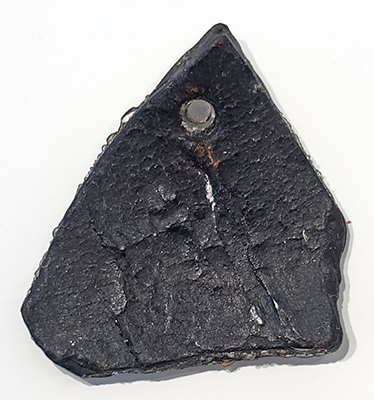
Triangular pendant, with a hole, in jet.
From Petersfels bei Engen im Hegau, circa 15 000 BP - 12 000 BP.
Photo: Don Hitchcock 2018
Source: Archäologisches Museum Colombischlössle, Freiburg, Germany
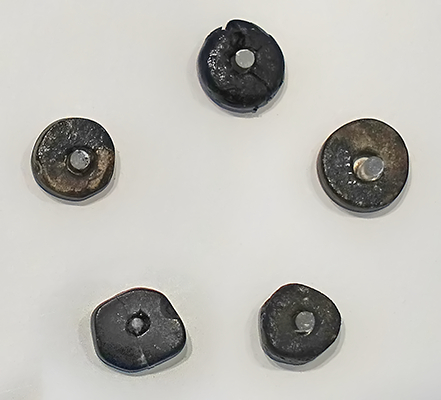
( These very small rondelles appear to have been meant as beads, perhaps as ceremonial objects rather than day to day personal ornaments. Some jet is hard enough to take a high lustre with rubbing, but these appear to be of a softer material than the highest quality jet - Don )
From Petersfels bei Engen im Hegau, circa 15 000 BP - 12 000 BP.
Photo: Don Hitchcock 2018
Source: Archäologisches Museum Colombischlössle, Freiburg, Germany
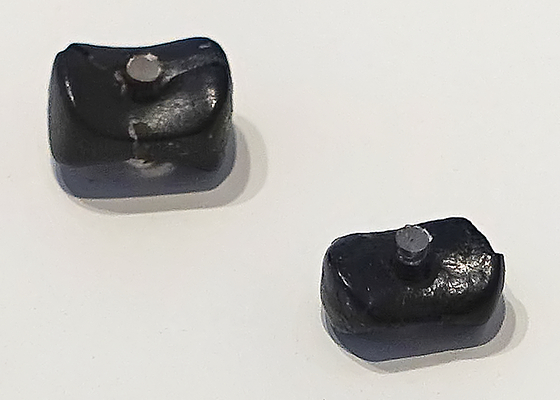
( These very small, saddle shaped beads are unusually shaped - Don )
From Petersfels bei Engen im Hegau, circa 15 000 BP - 12 000 BP.
Photo: Don Hitchcock 2018
Source: Archäologisches Museum Colombischlössle, Freiburg, Germany
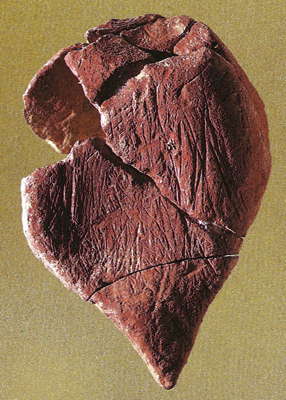
Petersfels
14 000 - 10 000 BP
In front of the cave were several engraved bones and statuettes, and this 7 cm long piece of ochre, red iron oxide.
Photo: Müller-Beck and Albrecht (1987)
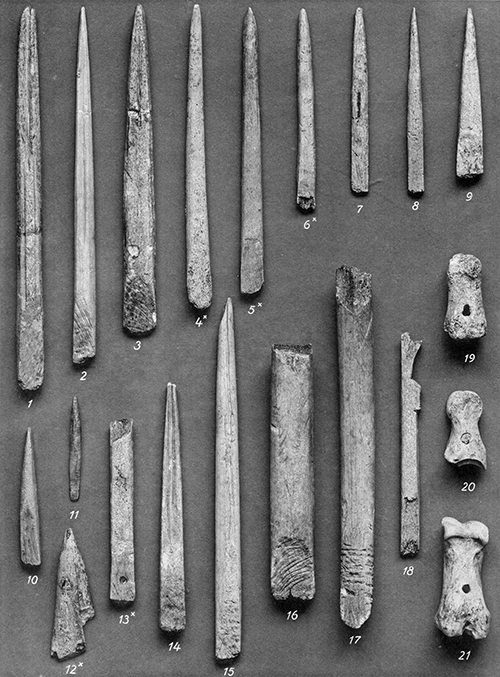
Bone spear points from Petersfels, most with bevelled bases, an incomplete venus figure (#18), and three whistles.
Photo: Peters (1930)
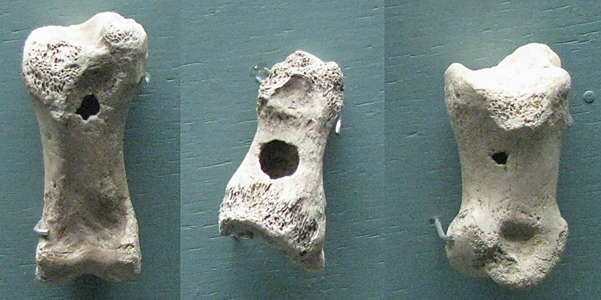
Whistles made of Reindeer Bones, Petersfels, circa 15 000 BP - 12 000 BP.
Photo: Don Hitchcock 2008
Source: Badisches Landesmuseum Karlsruhe Germany
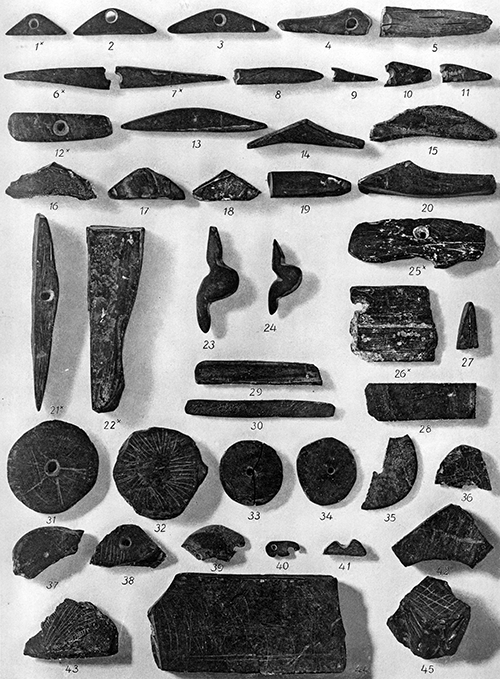
Items made of jet, from Petersfels.
Photo: Peters (1930)
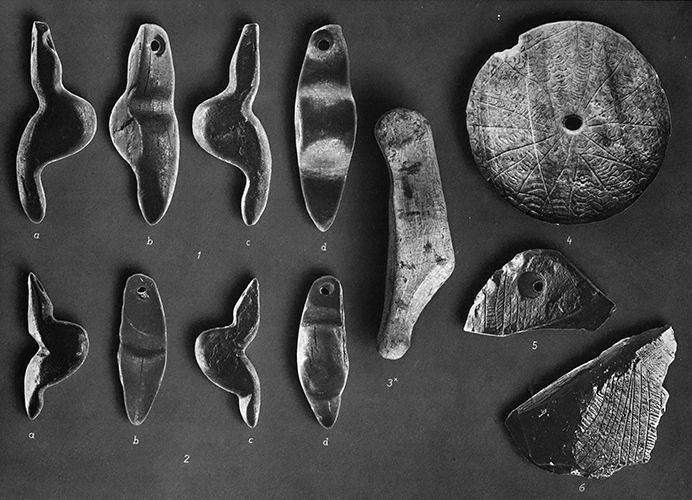
On the left, four views each of two venus figures in jet.
No. 3 appears to be a draft of a venus figure, possibly in limestone.
No. 4 is a decorated rondelle of mammoth ivory.
No. 5 has the shape of a schematic venus, is apparently of jet, but is decorated with engravings.
No. 6 appears to be of jet, and is engraved with a linear pattern.
Photo: Peters (1930)
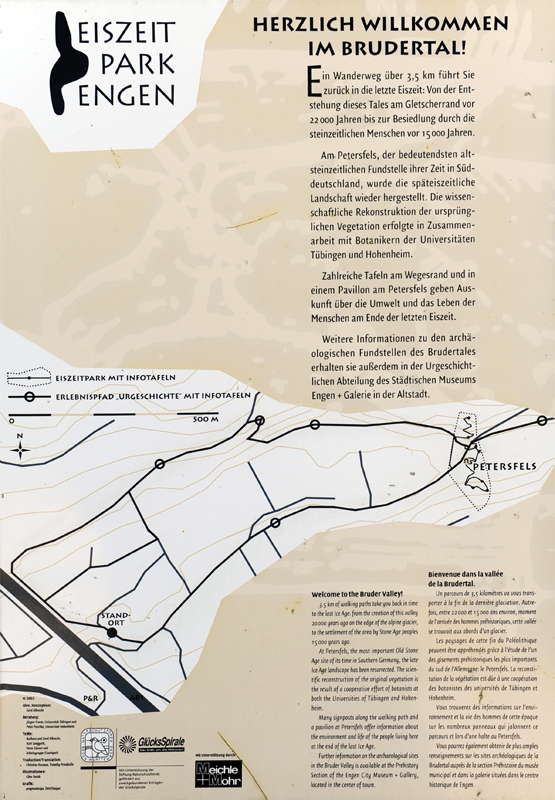
Map of the Petersfels walking trail
Photo: Conquistador via Panoramio
Artist: © Libor Balák
Source: Müller-Beck and Albrecht (1987)
Excavations in the 1970s confirmed that this area was an important one for ice age hunters, as it formed a narrow corridor for the migration of reindeer in autumn.
As well as the venus figures, tools and one and a half tons of animal bones were excavated. It was decided to try to recreate the environment of the people who once hunted reindeer here.
Archaeologists from the University of Tuebingen recreated the Archaeobotany of Tübingen and Hohenheim: the forest at Petersfels was cleared, and in its place, late-glacial vegetation landscape of tundra steppe was reconstructed, including an artificial bog in front of the Petersfels site.
The area was dedicated in 2003 as the 'Engen Ice Age Park' and thus was created the 'Late ice age landscape experience.'
The park is open all year round free of charge and is easily accessible.
Text above translated and adapted from:
http://www.outdooractive.com/de/themenweg/bodensee-oberschwaben/eiszeitpark-engen/-5892442703021447353/beschreibung.html
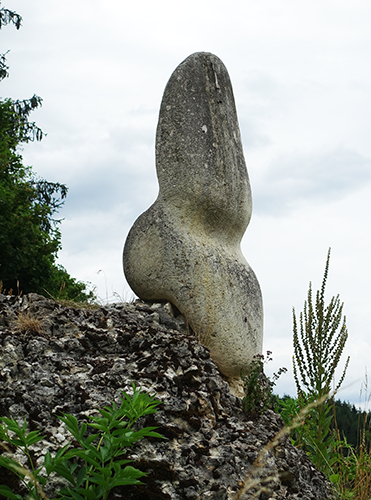
Large replica in stone of one of the tiny iconic statues in jet from the site, on the Petersfels walking trail, not far from the cave.
Photo: Don Hitchcock 2018
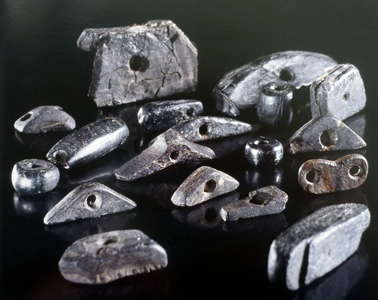
The Petersfels site has yielded other jewellery besides venus figures.
Photo: Rau et al. (2009)
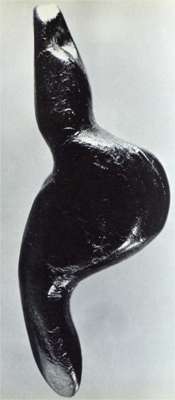
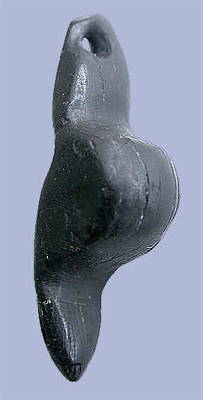

The 'Venus of Engen' or 'Frauenidol von Engen', bears a remarkable resemblance to the Venus of Neuchâtel, especially since it is also made of jet. This important find from Petersfels can be seen in the Städtischen Museum Engen + Galerie. The date given is 15 000 BP. The height is 38 mm, the largest of the venus figures from Petersfels.
This venus was found during the excavations of 1927 and 1928, and the highly stylised figure is determined to be female just from the very expansive buttocks.
Photo: (left) Marshack (1972)
Photo: (right) © Archäologisches Landesmuseum Baden-Württemberg
Text: adapted from: http://www.engen.de/england/venus.htm
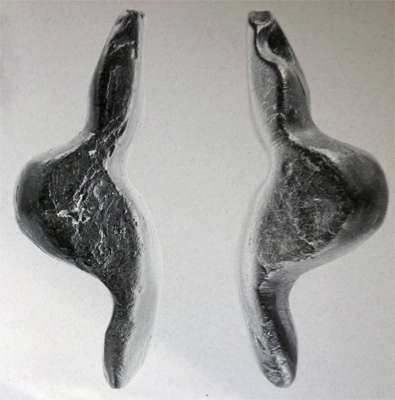

Petersfels venus, as above.
Photo: Adam et al. (1980)
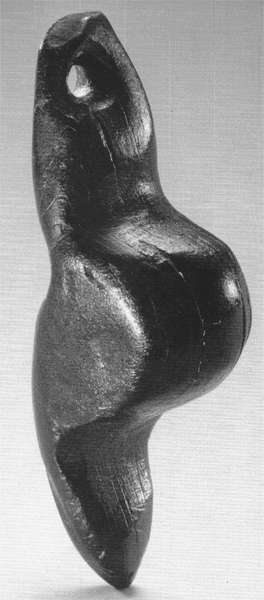

Petersfels Venus, or 'Venus of Engen' or 'Frauenidol von Engen', the same as in the photos above. This is the one which was used as the basis for the large white statue on the Petersfels walking trail.
Size: 40 mm (note that other sources say 38 mm)
Material: Jet, a type of hard black coal.
Source: Museum Freiburg
Photo: Müller-Beck and Albrecht (1987)
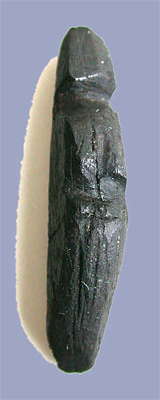
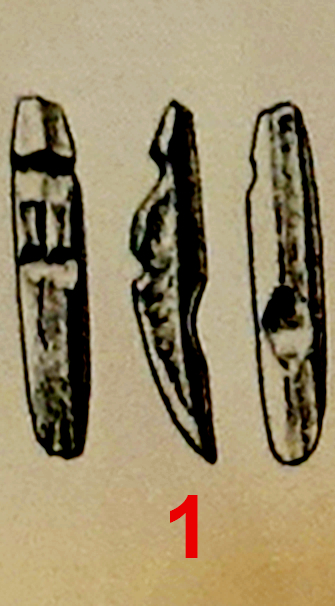
Another venus from Petersfels, also called the 'Venus of Engen' or 'Frauenidol von Engen'.
Also 15 000 BP, and made of jet, height 30 mm.
This slim sculpture was recovered from the Petersfels excavations in 1932.
Photo: © Archäologisches Landesmuseum Baden-Württemberg
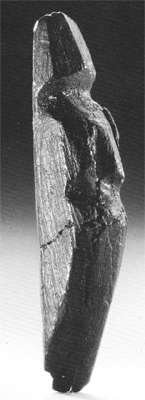
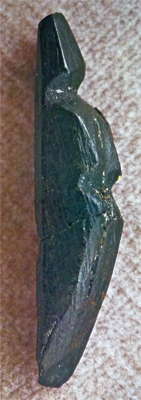

The same Petersfels Venus as above.
30 mm
Made of jet.
Photo (left): Müller-Beck and Albrecht (1987)
Source: Freiburg Museum
Photo (right) Adam et al. (1980)
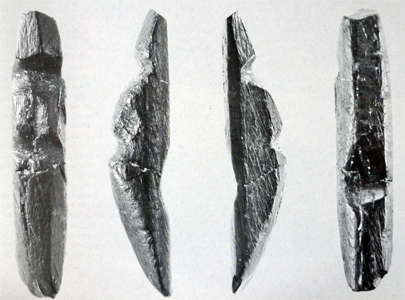

Four views of this Petersfels venus.
Photo: Adam et al. (1980)
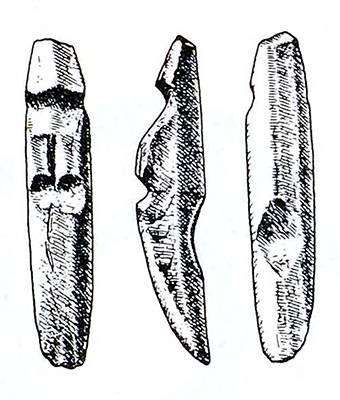
Drawings of this Petersfels venus.
Source: Mauser (1968)
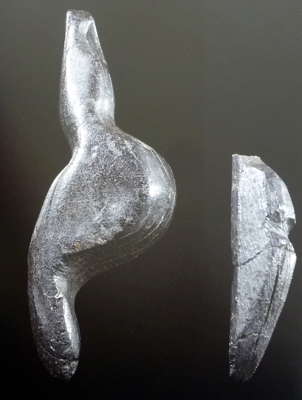

Two Petersfels venuses.
Photo: Rau et al. (2009)

Petersfels Venus.
Made from reindeer antler, 33 mm
Photo: Müller-Beck and Albrecht (1987)
Source: Singen Museum
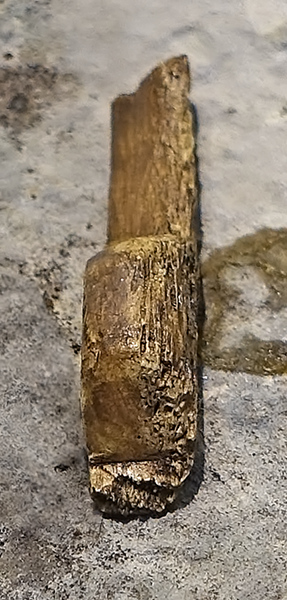
Petersfels Venus as above.
33 mm
Made from reindeer antler
Photo: Don Hitchcock 2018
Source: Facsimile, Display at the Engen Municipal Museum and Gallery



Petersfels Venus, 90 mm in length.
This venus figurine was not completed.
Photo (left): Don Hitchcock 2018
Photo (centre): Ralph Frenken 2020
Photo (right): Müller-Beck and Albrecht (1987)
Source (left and centre): Facsimile, display at the Engen Municipal Museum and Gallery
Source (right): Singen Museum
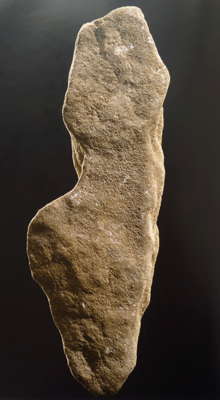
Petersfels venus, 10 cm high, in limestone.
Photo: Rau et al. (2009)
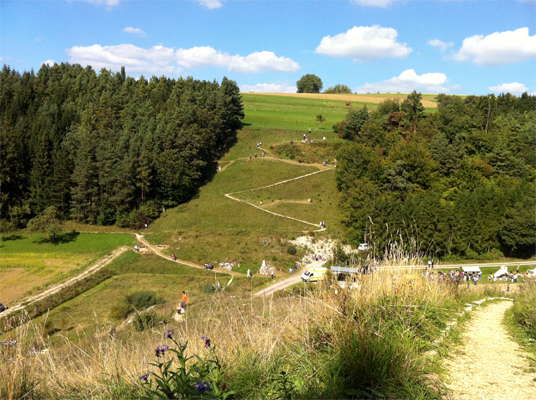
The Petersfels walking trail, with points of interest well signposted. The statue above may be discerned in the lower centre of this image. The site itself is below the man in the orange shirt, hidden by the steep slope.
Photo: engenfotoshot via Panoramio
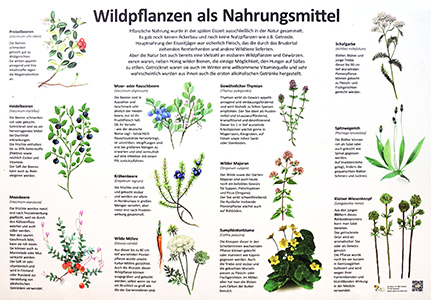
The area around the cave has been cleared, and replanted with typical plants from the time that the hunters were here in the last ice age.
Photo: © nib, Natur im Bild GmbH, 37124 Rosdorf www.natur-im-bild.com
Rephotography: Don Hitchcock 2018
Source: Notice boards at the Petersfels site.
From grasses to woven works.
Cottongrass ( Eriophorum angustifolium ), Cowslip ( Caltha palustris ), various iris species ( Iris pseudacorus, Iris sibirica ), many rush varieties ( Juncaceae ), herbaceous grasses ( Poaceae ), and sedges ( Cyperaceae ) as well as horsetail ( Equisetum sp. ) could be found growing in wetlands, swamps and along creeks at the end of the Ice Age. The stems of rushes and other long stemmed plants were used for weaving twine and mats.
Artist: © Libor Balák
Rephotography: Don Hitchcock 2018
Source: Notice board at the Petersfels site.
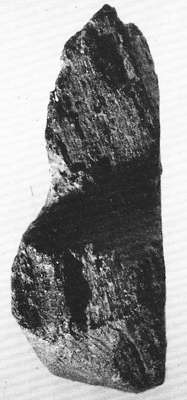
Small Petersfels Venus.
Size: 13 mm
Material: Jet
Source: Museum Sammlung Engen
Photo: Müller-Beck and Albrecht (1987)
Jet figures from Petersfels.
Engen-Bittelbrunn, Petersfelshole
District of Konstanz
Upper Palaeolithic, approximately 14 000 BP.
Left:
This little 'beetle' (seen by most experts now to be a hedgehog - Don ) is fully sculptured, and is transversely pierced. It could have been used as a pendant or served to decorate clothing.
Inv No Dep 2008/4
Centre:
These two highly stylised figurines probably show women, but for whom the neck, breasts and waist are only hinted at.
Perhaps these pieces were sewn onto clothes.
Inv No Dep 2008/5-6
Right:
Pendant.
These small stylised representations of women with strongly emphasised buttocks are found especially at Petersfels, but similar copies have survived at other Upper Paleolithic sites.
The hole at the top of the piece indicates that it could have served as a pendant or could have been sewn onto clothing.
inv - No, 96/206
Photo: Don Hitchcock 2015
Source: Facsimiles, Badisches Landesmuseum Karlsruhe Germany
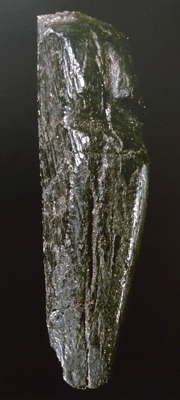
Stylised venus from Petersfels in jet. This Magdalenian object appears to be the same piece as on the far right, above.
Photo: Rau et al. (2009)
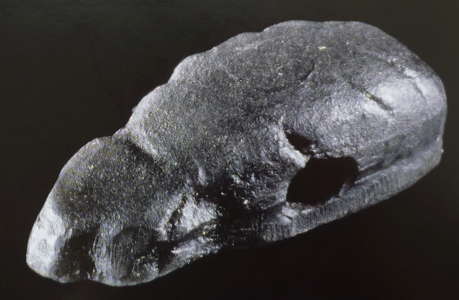
Hedgehog from Petersfels.
Photo: Rau et al. (2009)
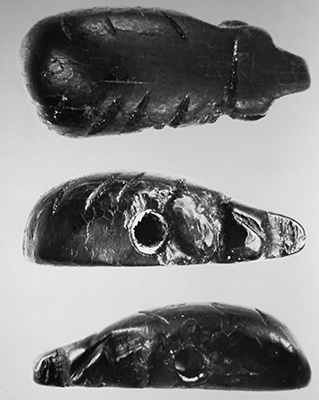
Hedgehog from Petersfels.
Photo: Adam et al. (1980)
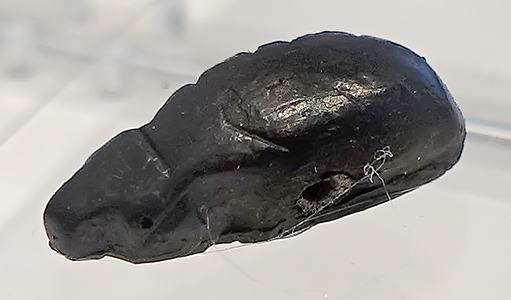
Pendant in the form of a 'beetle' ( seen by most experts now to be a hedgehog, Erinaceus europaeus - Don ).
Circa 12 000 BP.
Photo: Don Hitchcock 2018
Source and text: Facsimile, from Petersfels bei Engin im hegau, Archäologisches Museum Colombischlössle, Freiburg im Breisgau, Germany
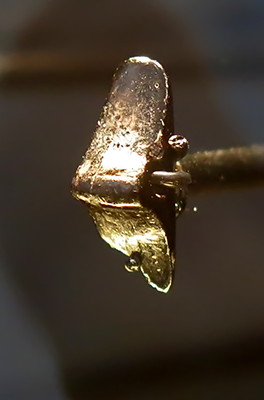
Two beads and two pendants from Petersfels. These objects are very small indeed.
Made of jet, Petersfels, Engen-Bittelbrun, Kreis Konstanz.
From the Magdalenian, 14 000 BP - 12 000 BP
Photo: Don Hitchcock 2018, 2015
Source and text: Landesmuseum Württemberg, Stuttgart
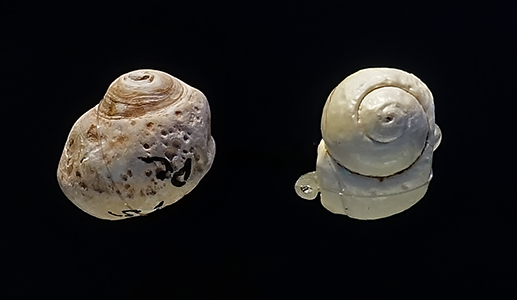
Two snail shells used as jewellery from Petersfels.
Petersfels, Engen-Bittelbrun, Kreis Konstanz.
From the Magdalenian, 14 000 BP - 12 000 BP
Photo: Don Hitchcock 2018
Source and text: Landesmuseum Württemberg, Stuttgart
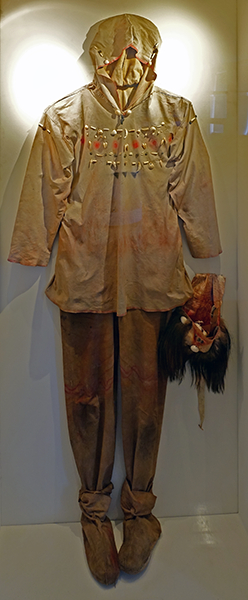
Clothing which is inferred for the reindeer hunters of Petersfels.
Artist: Not recorded
Photo: Don Hitchcock 2018
Source: Display at the Engen Municipal Museum and Gallery
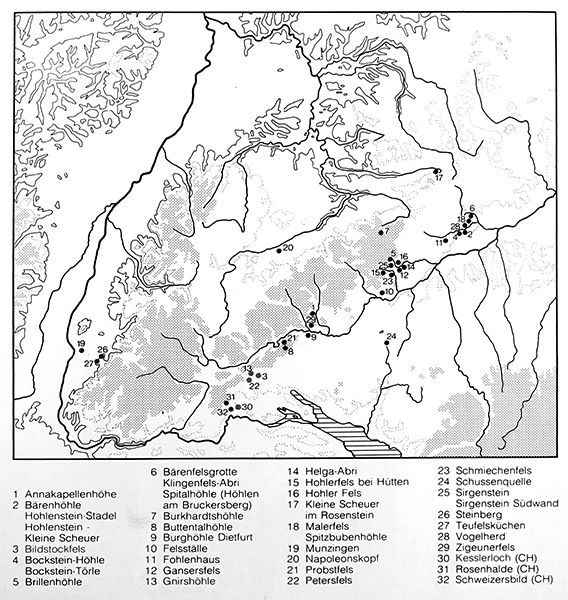
The people of the Palaeolithic were not settled. As hunters and gatherers, they roamed over vast areas during the year, to make use of the different food sources. The large hunting stations of Petersfels near Engen and Kesslerloch near Schaffhausen belong to a number of sites of the Magdalenian on the southern edge of the Swabian Alb. The smaller sites Gnirshöhle and Bildstockfels are remnants of a short or less intensive stay of the ice age people.
Cartographer: Not recorded
Rephotography: Don Hitchcock 2018
Source: Display at the Engen Municipal Museum and Gallery
Reindeer form large herds in the autumn to move to low-precipitation areas. Only there can they be sure of finding food under the thin snowpack even in winter.
At the time of the Magdalenian, 12 000 years ago, the reindeer herds moved from the fertile Alpine foothills via the Swabian Alb to winter quarters in the Neckar region.
( Note that diverting the reindeer from their preferred route on to the plateau and up the Bruder Valley instead may have been a difficult task for the reindeer hunters, and would have required a great deal of good organisation and possibly the building of temporary fences, or at least the help of as many men, women and children as could be mustered, to wave small hides or tree branches - Don )
Cartographer: Not recorded
Rephotography and translation: Don Hitchcock 2018
Source and text: Display at the Engen Municipal Museum and Gallery
The easiest route for the climb by the reindeer from the Bruder Valley to the plateau is shown in yellow, and the reindeer would have had to have been guided away from their preferred route, and to continue instead along the valley towards Petersfels, a route shown in red.
I would assume that only small numbers of reindeer, perhaps a dozen or so at a time, would have been so diverted, for reasons of keeping control of the animals, and the need to spear, skin, dress, cut up and otherwise process the kill, by smoking and drying the meat, preparing the hides, and so on, with limited numbers of people.
Text: Don Hitchcock
Source: Adapted from Google Earth
Diorama of the reindeer hunt at Petersfels.
Note that it would have been useful and relatively easy to have permanent rock walls at the site itself, where there was plenty of labour to create the stone walls, close by the living area.
Artist: Not recorded
Photo and text: Don Hitchcock 2018
Source: Display at the Engen Municipal Museum and Gallery
A structure similar to the one at Petersfels has been found underwater off the coast of Germany.
In 2021, scientists aboard a research vessel noticed a submerged stretch of stones off Germany’s Baltic coast. Now, after examining the site, researchers say the incidental observation was one of the oldest known man-made megastructures: a wall built by Stone Age hunters to help capture prey.
The discovery, named Blinkerwall, is made up of more than 1 300 stones and roughly 300 larger boulders, and it stretches for nearly a kilometre along the seafloor. Resting nearly 21 metres underwater in the Bay of Mecklenburg.
Spanning some 971 metres, the wall was less than a metre high and less than 2 metres wide. The consistency and neatness, the team says, are unlikely to be the result of natural processes, such as glacial transport or being pushed by ice.
In addition, the structure appears to have been adjacent to an ancient shoreline or bog. However, the Blinkerwall was unlikely to have served as a fish weir, since the researchers could find no water flow as required for proper functionality.
Nor would it have served as a coastal defence, since 2 metres is too narrow for the base of a coastal wall. And the construction of a harbour, they say, is also unlikely, since the people who inhabited the region over 10 000 years ago were unlikely to be doing much sea-faring.
'Based on the information at hand,' the researchers write, 'the most plausible functional interpretation for the Blinkerwall is that it was constructed and used as a hunting architecture for driving herds of large ungulates.' Those would have consisted, at the time, primarily of reindeer or bison.
Natural events, such as glacial deposits or other land movements, cannot account for this structure’s existence, researchers report in a study published Monday in Proceedings of the National Academy of Sciences. Instead, they argue, the roughly 10 000 year old wall was a tool built by hunters to guide and trap reindeer, which tend to travel along straight elements of the landscape, such as cliffsides or streams.
'Hunters tapped into the natural behavior of the animals and created their own linear feature', Ashley Lemke, an underwater archaeologist at the University of Wisconsin-Milwaukee who was not involved with the research, tells Science’s Andrew Curry. 'It’s not an obstruction, it’s a trail. They follow it to where the hunters are waiting.'
Though the wall is now underwater, it was likely constructed during a period between 8 500 and 14 000 years ago, when the site was on dry land. Before that window, a massive ice sheet covered the region; and after, sea levels rose and flooded everything.
When the low wall was built, it would have run adjacent to a lake, where reindeer likely congregated and were susceptible to changing their herd’s movements, the team suggests.
'When you chase the animals, they follow these structures - they don’t attempt to jump over them', study lead author Jacob Geersen, a senior scientist at the Leibniz Institute for Baltic Sea Research, tells the Guardian’s Ian Sample. 'The idea would be to create an artificial bottleneck with a second wall or with the lake shore.'
Photo: Michal Grabowski
Source: Christian Thorsberg, www.smithsonianmag.com, www.sciencealert.com

Botfly larva carved in jet. It would seem that the humans in these times suffered sometimes from botfly larvae. They cause discomfort, but are not dangerous. Skilled healers in third world countries can manipulate the larva which is under the skin, then squeeze it so that it pops out.
This carving in jet is not from Petersfels. it is from the 'Kleine Scheuer unter dem Rosenstein, Heubach, Ostalbkreis'. Some sources say it is a botfly larva, others that it depicts a marine snail.
Photo: Adam et al. (1980)
Botfly in jet, as above. Note the two holes at the rear of the sculpture, (probably connected at their ends) so that a cord could be passed through one hole and out the other, thus having the sculpture able to be used as a pendant. The technique would have been difficult, presumably the holes would have been drilled at an angle, to meet at a V inside the object, then a thin cord would have had to have been introduced to one hole, then coaxed to turn through nearly 180° to come out of the other.
Magdalenian, 14 000 - 12 000 BP.
Photo: Don Hitchcock 2018
Source: Landesmuseum Württemberg, Stuttgart
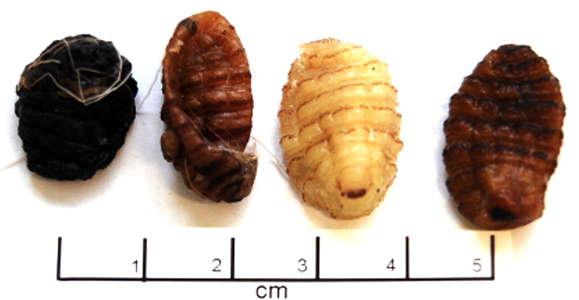
Reindeer Botfly
Müller-Beck et al. (1987) say that the carving in jet above is a reindeer botfly.
Photo: http://inpractice.bmj.com/content/32/10/462/F3.large.jpg
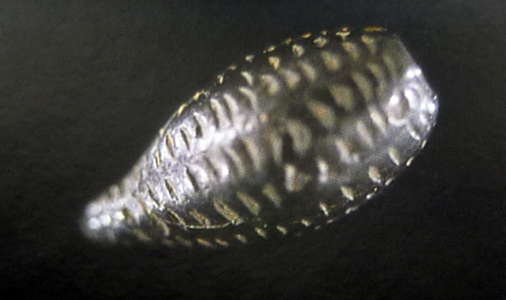
Reindeer botfly larva from Kesslerloch, Magdalenian.
(or human botfly larva, see the photos below. Note that botflies are also known as warble flies and gadflies - Don )
Photo: Rau et al. (2009)
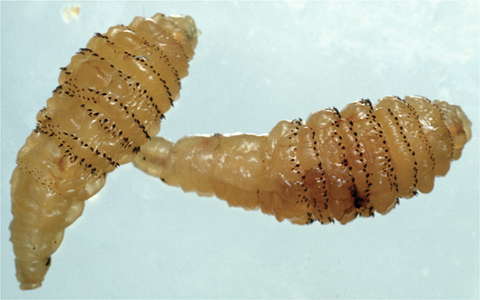
Human Botfly
Size: 13 mm
Two third larval instars of the human bot fly Dermatobia hominis (ca 13 mm …)
Photo: http://otm.oxfordmedicine.com/cgi/content-nw/full/5/1/med-9780199204854-chapter-712-a/FIG712013
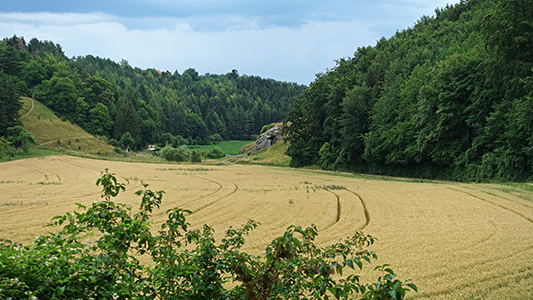
The Brudertal, or Brother Valley, in which Petersfels is located. The site may be seen in the centre of the image.
The site was ideally situated as a 'choke point', where reindeer were crowded together on their way through the valley, and were more easily hunted.
The road leading up the valley in the centre left of the image (click to enlarge) leads within a few hundred metres to the Gnirshöhle, also used by ice age reindeer hunters, but probably by different groups who never actually met.
Photo: Don Hitchcock 2018
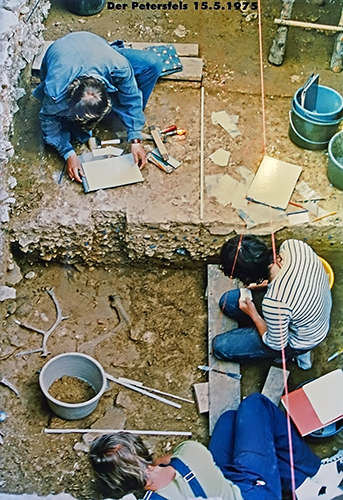
Further research by Gerd Albrecht from 1974-1976 and 1979, using modern methods, was made in front of the Petersfels Cave, which yielded a great deal of material not found by Peters.
These excavations allowed for more precise timing of the cultural layer through a series of 14C data (between 13 200 BP and 11 600 BP).
Since 1974, at least 10 inspection horizons have been detected. In the autumn, especially, reindeer were hunted, which were driven into the Brudertal and killed at the narrow point at Petersfels Cave.
Photo: Albrecht et al. (1983)
Text: Nübling (1999)
Rephotography: Don Hitchcock 2018
Proximal source: Engen Municipal Museum and Gallery
Rock crystal (quartz) tools from Petersfels, circa 15 000 BP - 12 000 BP
Rock crystal requires specialised techniques to knap, and the bipolar technique is often used. This involves an impactor striking the top of the core which rests on an anvil, with flakes being initiated from both ends of the core.
Rock crystal is sometimes used for large pieces and for microliths, but it often does not break in the consistent way that good flint does. While many of the flakes made from rock crystal are usable, they are difficult to retouch.
It is classified as macrocrystalline, as opposed to microcrystalline for materials such as flint and chalcedony.
Photo: Don Hitchcock 2008
Source: Badisches Landesmuseum Karlsruhe Germany
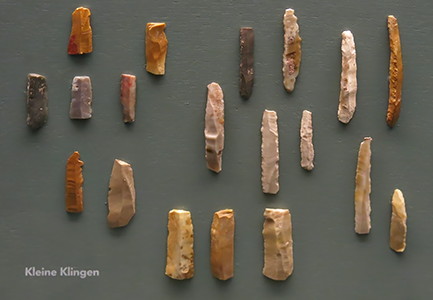
Petersfels, Germany, circa 15 000 BP - 12 000 BP
Small blades from the Upper Palaeolithic.
Long blades (rather than flakes) appeared during the Aurignacian, or Upper Palaeolithic.
Photo: Don Hitchcock 2008
Source: Badisches Landesmuseum Karlsruhe Germany
Text: Adapted from Wikipedia
Grattoirs, or scrapers.
From Petersfels bei Engen im Hegau, circa 15 000 BP - 12 000 BP.
Photo: Don Hitchcock 2018
Source: Original, Archäologisches Museum Colombischlössle, Freiburg, Germany
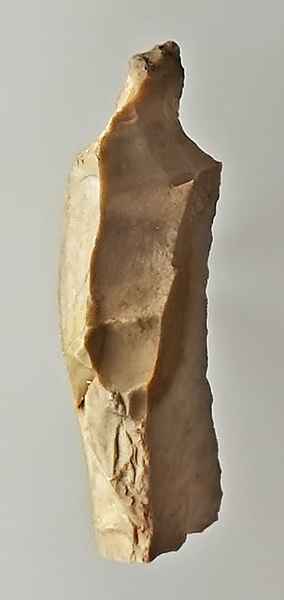
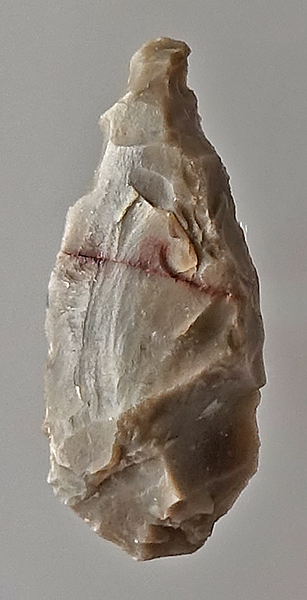
Drills.
From Petersfels bei Engen im Hegau, circa 15 000 BP - 12 000 BP.
Photo: Don Hitchcock 2018
Source: Original, Archäologisches Museum Colombischlössle, Freiburg, Germany
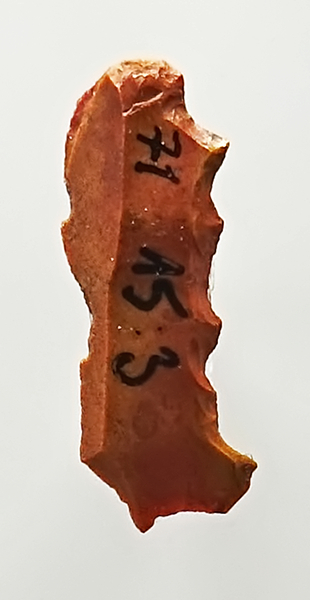
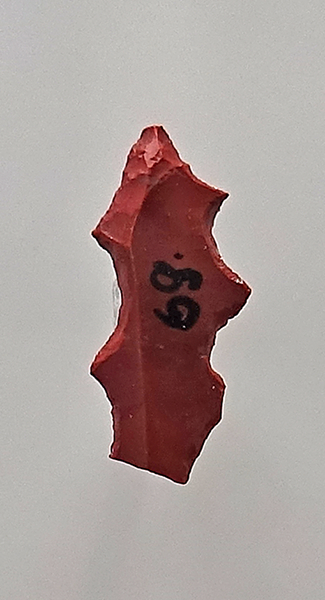
Saws.
( These may have been used in cutting up meat - Don )
From Petersfels bei Engen im Hegau, circa 15 000 BP - 12 000 BP.
Photo: Don Hitchcock 2018
Source: Original, Archäologisches Museum Colombischlössle, Freiburg, Germany



Knives.
From Petersfels bei Engen im Hegau, circa 15 000 BP - 12 000 BP.
Photo: Don Hitchcock 2018
Source: Original, Archäologisches Museum Colombischlössle, Freiburg, Germany
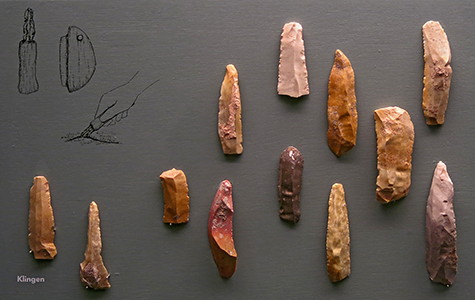
Petersfels, Germany, circa 15 000 BP - 12 000 BP
Larger blades from the Upper Palaeolithic.
Blades were used as knives, and were easier to use if they were hafted, or put on a handle.
They were also the starting point for a wide range of other tools.
Photo: Don Hitchcock 2015
Source: Badisches Landesmuseum Karlsruhe Germany
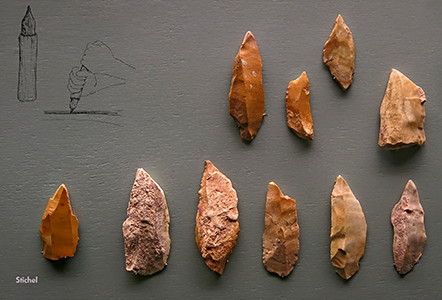
Petersfels, Germany, circa 15 000 BP - 12 000 BP
Burins from the Upper Palaeolithic.
A burin is a flint tool with a chisel-like edge which was used for engraving, or for carving wood or bone.
They were also used for repeatedly scoring bone until a tool could be separated from the substrate in the desired shape.
Photo: Don Hitchcock 2015
Source: Badisches Landesmuseum Karlsruhe Germany
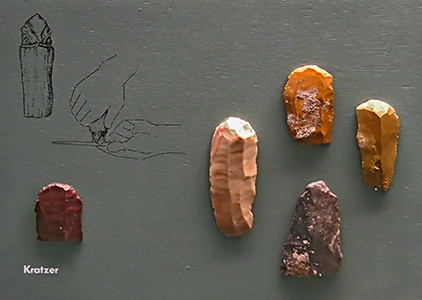
Petersfels, Germany, circa 15 000 BP - 12 000 BP
Scrapers from the Upper Palaeolithic.
Scrapers were used for cleaning the meat off hides and bones, and smoothing and shaping wooden tools.
Photo: Don Hitchcock 2008
Source: Badisches Landesmuseum Karlsruhe Germany
Text: Adapted from Wikipedia
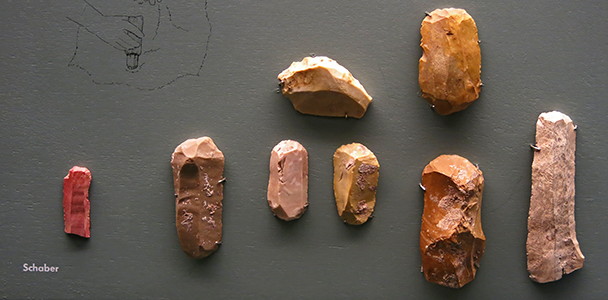
Petersfels, Germany, circa 15 000 BP - 12 000 BP
Scrapers from the Upper Palaeolithic.
Photo: Don Hitchcock 2008
Source: Badisches Landesmuseum Karlsruhe Germany
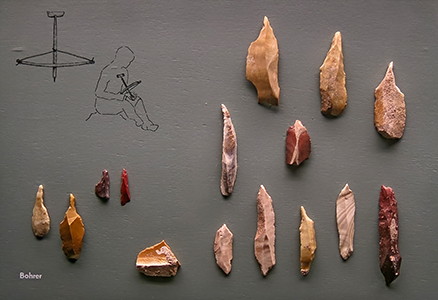
Petersfels, Germany, circa 15 000 BP - 12 000 BP
Drill bits from the Upper Palaeolithic.
These were hafted on a cylindrical stick, and a bow was used to rotate the tool for drilling holes. Very fine drill bits were needed to drill holes for the eye of a needle.
It cannot have been easy to attach the drill bit so that the point was exactly in the right place, spinning true in the centre of rotation.
Photo: Don Hitchcock 2015
Source: Badisches Landesmuseum Karlsruhe Germany
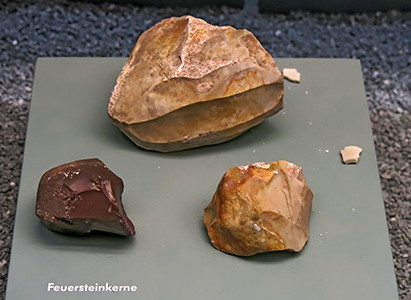
Petersfels, Germany, circa 15 000 BP - 12 000 BP
Flint cores from the Upper Palaeolithic, from which tools were struck.
Photo: Don Hitchcock 2015
Source: Badisches Landesmuseum Karlsruhe Germany
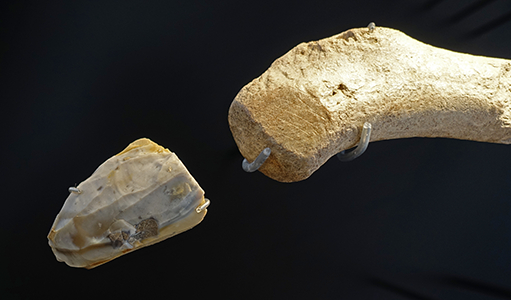
Core, Jurahornstein, Jurassic chert, and hammer.
Core from Petersfels, Engen-Bittelbrunn, Kreis Konstanz, Magdalenian, circa 14 000 BP - 12 000 BP.
(Sledge) Hammer of reindeer antler, Geißenklösterle, Blaubeuren-Weiler, Alb-Donau-Kreis, Magdalenian, circa 14 000 BP - 12 000 BP.
Photo: Don Hitchcock 2018
Source and text: Landesmuseum Württemberg, Stuttgart
Core, Jurahornstein, Jurassic chert, and hammer.
Core from Petersfels, Engen-Bittelbrunn, Kreis Konstanz, Magdalenian, circa 14 000 BP - 12 000 BP.
(Sledge) Hammer of sandy limestone, Brillenhöhle, Blaubeuren-Weiler, Alb-Donau-Kreis, Magdalenian, circa 14 000 BP - 12 000 BP.
Photo: Don Hitchcock 2018
Source and text: Landesmuseum Württemberg, Stuttgart
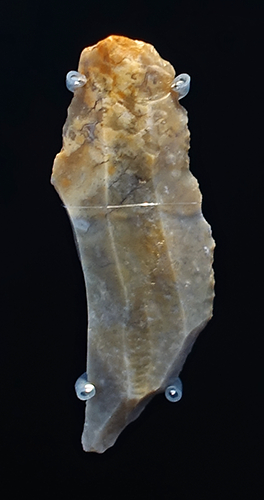
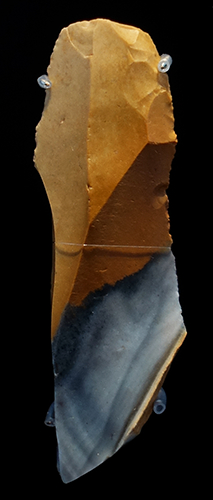
Burins from Petersfels, Jurahornstein, Jurassic chert.
Engen-Bittelbrunn, Kreis Konstanz, Magdalenian, circa 14 000 BP - 12 000 BP.
Photo: Don Hitchcock 2018
Source and text: Landesmuseum Württemberg, Stuttgart
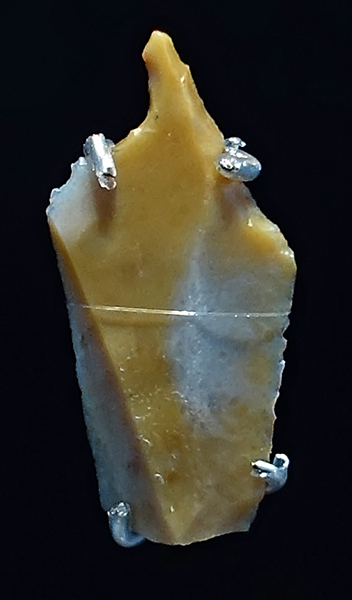
Four drills from Petersfels, Jurahornstein, Jurassic chert.
Engen-Bittelbrunn, Kreis Konstanz, Magdalenian, circa 14 000 BP - 12 000 BP.
Photo: Don Hitchcock 2018
Source and text: Landesmuseum Württemberg, Stuttgart
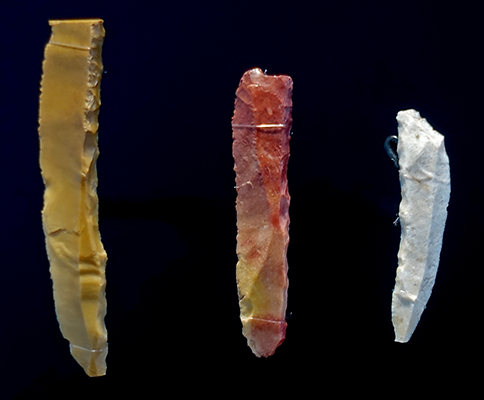
Three backed knives from Petersfels, Jurahornstein, Jurassic chert.
Engen-Bittelbrunn, Kreis Konstanz, Magdalenian, circa 14 000 BP - 12 000 BP.
Photo: Don Hitchcock 2018
Source and text: Landesmuseum Württemberg, Stuttgart
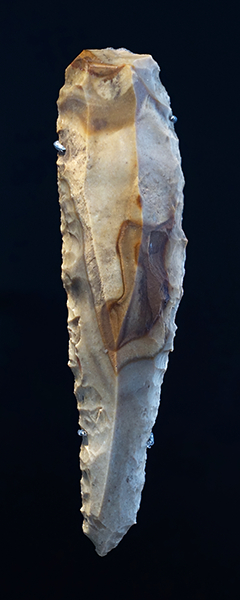
Grattoir, scraper on a blade, from Petersfels, Jurahornstein, Jurassic chert.
Engen-Bittelbrunn, Kreis Konstanz, Magdalenian, circa 14 000 BP - 12 000 BP.
Photo: Don Hitchcock 2018
Source and text: Landesmuseum Württemberg, Stuttgart
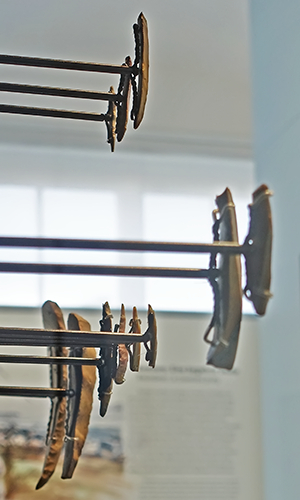
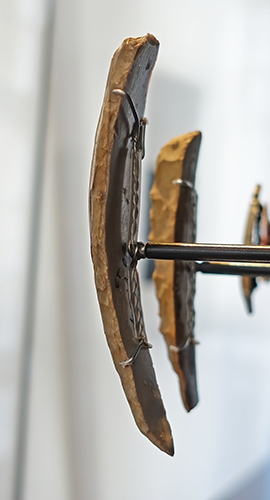
What is not often realised is that the tools made from blades struck from a core are almost always in a curve from top to bottom, or longitudinal section, as shown in these two photographs.
The photo on the right also illustrates the care taken by museum curators to ensure that although the tools are securely held to the board behind the display, they are not damaged in the process.
Photo: Don Hitchcock 2018
Source: Landesmuseum Württemberg, Stuttgart
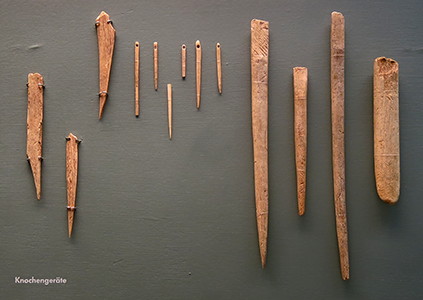
Petersfels, Germany, circa 15 000 BP - 12 000 BP
Bone tools from the Upper Palaeolithic.
These have been fashioned into bone wedges, points, awls, needles with eyes, and polishers for working leather.
Photo: Don Hitchcock 2015
Source: Badisches Landesmuseum Karlsruhe Germany
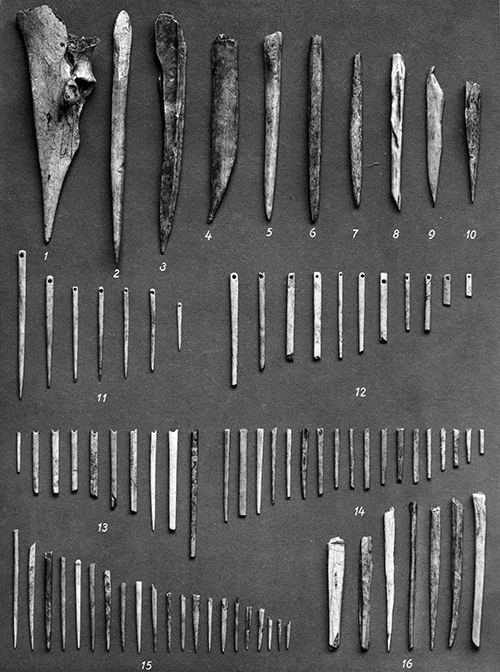
1 to 10: Awls made of bone, which takes a sharp point.
11, 12, 13, 14: Needles.
15: Either the remains of needles, or awls.
16: Awls?.
Photograph of the originals: Peters (1930)
Identifications: Don Hitchcock
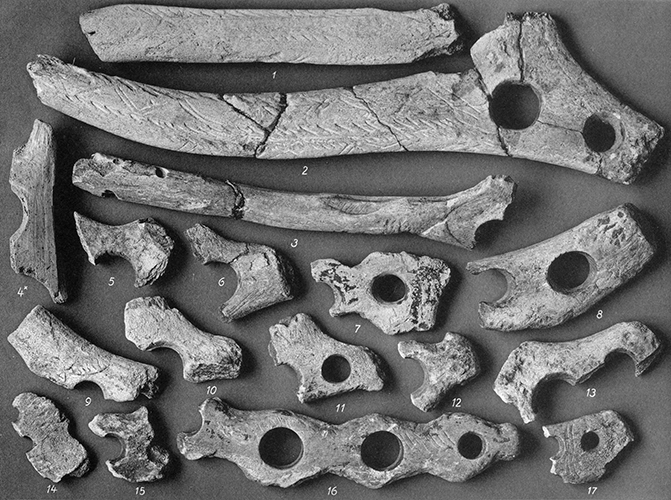
Bâtons percés, pierced batons. There are a large number of explanations for these items, but they are often seen as spear shaft straighteners. The wear marks and elliptical shape of many of them seem to bear that out. In this photograph are several examples with different shaped holes, presumably for working spear shafts of different diameters.
See the link below for a fuller explanation of bâtons percés.
Photograph of the originals: Peters (1930)
Identifications: Don Hitchcock
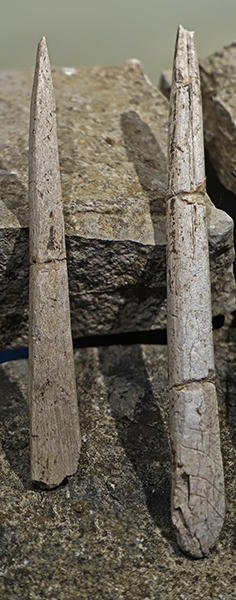
Spear points made of reindeer antler, with the one on the right showing scoring grooves to aid adhesion of the birch bark glue used, in addition to being wrapped with sinew in order to attach the point to the shaft of the spear.
Photo: Don Hitchcock 2018
Source: Engen Municipal Museum and Gallery
Drills.
Photo: Don Hitchcock 2018
Source: Engen Municipal Museum and Gallery
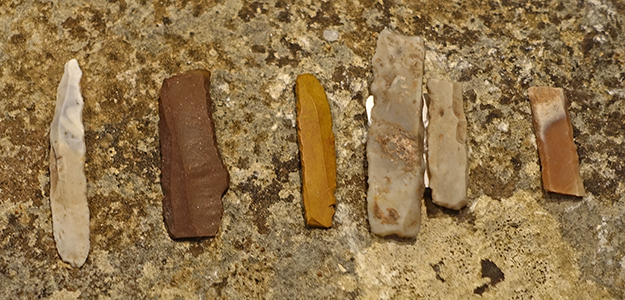
Backed knives.
Photo: Don Hitchcock 2018
Source: Engen Municipal Museum and Gallery
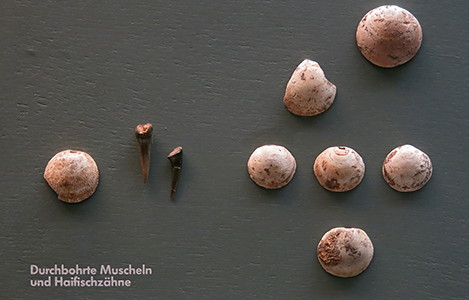
Pierced shells and shark teeth from Petersfels.
Photo: Don Hitchcock 2015
Source: Badisches Landesmuseum Karlsruhe Germany
Die Gnirshöhle
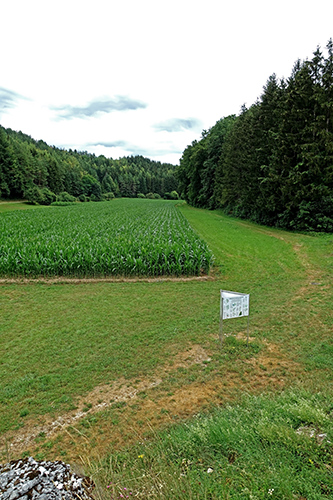
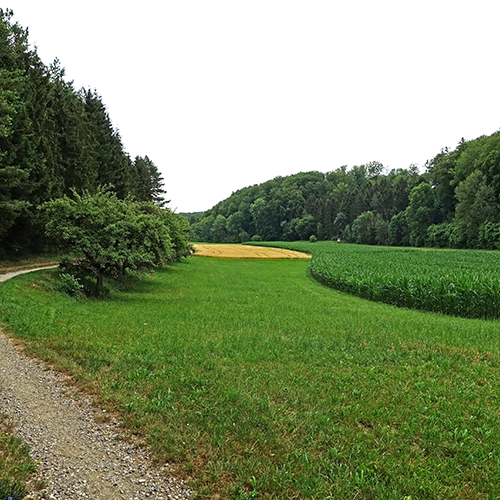
Die Gnirshöhle is on the left of the dry valley, a short distance 'upstream' from the Petersfels site, accessed via the road shown in the right hand image.
Photo: Don Hitchcock 2018
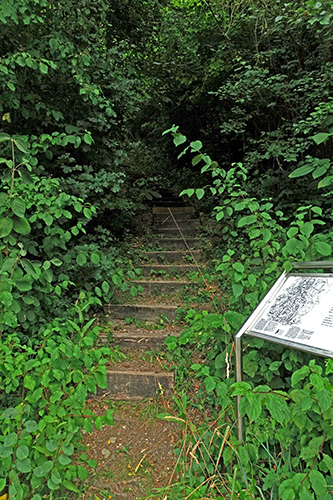
The access is via this short path, marked by a sign.
Photo: Don Hitchcock 2018
Die Gnirshöhle sign.
The Gnirshöhle takes its name from the owner of the property on which the entrance to the cave sits. Deep in the cave, two late Palaeolithic settlement areas were discovered. In each of them, short winter occupations by small groups of people are represented. Finds from this site demonstrate that these people were much different from those at the neighbouring Petersfels. The stone tools were unique, and both the raw materials, as well as the perforated molluscs used as ornaments indicate a connection to the Paris basin.
Artist: © Libor Balák
Rephotography: Don Hitchcock 2018
Source and text: Adapted from the sign just below the Gnirshöhle, near Petersfels
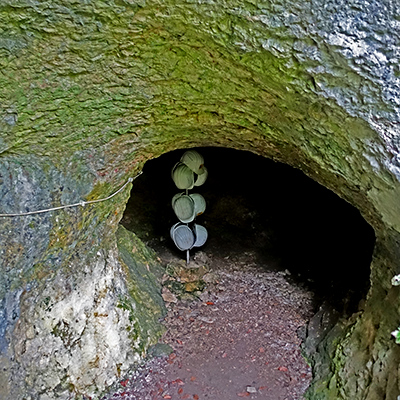
The entrance to the Gnirshöhle is protected by a metal grille.
The Gnirshöhle is only open to the public every couple of years, when there is a festival held at the Petersfels area to celebrate the site, eating, drinking, dressing up in period costume, shooting arrows and throwing spears using spear throwers at targets, demonstrations of flint knapping, interesting lectures, and for a good time to be had by all.
The Gnirshöhle entrance is 550 metres above sea level. As part of his excavations at the nearby Petersfels Cave, Eduard Peters excavated during 1927 and later in the Gnirshöhle, but without having great success.
In 1976 a cave club cleared a shaft in the northern part of the cave. From this excavation finds from the end of the last ice age came to light. The remnants of the finds were studied in 1977 and 1978 by the Institute of Prehistory, Tübingen, under the direction of Gerd Albrecht.
The site was named Gnirshöhle I (Gn1).
At the same time traces of glacial settlement were discovered in the western part of the cave. This passage is called Gnirshöle II (Gn 2).
The artefacts found at the Gnirshöhle were mostly brought in from other areas, with very little being made on site, in marked constrast the nearby Petersfels site, where there was a huge amount of debitage from locally sourced flint.
Photo: Don Hitchcock 2018
Text: sign in the entrance to the cave.
Getting there
... And completing the circuit
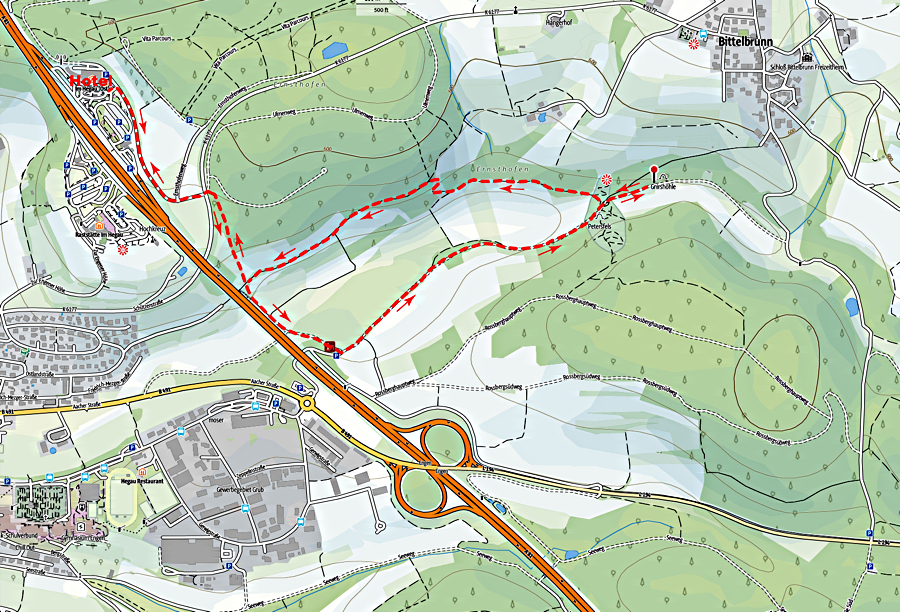
Since in Europe I was travelling by public transport and on foot, I walked carrying my backpack from Engen Railway Station to the Hotel outside of Engen, and the next morning walked from there (with a much lighter pack!) on a beautiful though overcast day down to Petersfels and back, using the route shown.
If you have a car, it would be easy to drive from Engen up the Aacher Straße (B491) then turn under the elevated motorway and park in the designated parking area shown on the map.
Those hiking in grassy, shrubby and forested areas in Europe should take reasonable precautions against ticks, which are abundant in woodlands all across Europe from early spring to late autumn.
Photo: Adapted from https://www.outdooractive.com/de/poi/hegau/gnirshoehle/1634594/#dm=1
The well made bitumen road from the hotel enters the main road at this point from the right (left photo). I crossed the main road, the Schützenstraße, onto a less well maintained road (in the foreground), and then immediately turned down the hill to the right (right photo), following a rough dirt road apparently kept open by the owner of the farmland below to provide access to the fields.
Photo: Don Hitchcock 2018
Eventually (left) you reach this sign, whose position is marked on the map as 'Stand-ort' or 'You are here', and circled by me in red. A little further on, (right), the narrow bitumen road from Engen comes in, and there is a small parking area at the junction. Most visitors would probably start and end their walk at this point, after driving their cars from Engen, and parking their vehicles here.
Artist: © Libor Balák
Photo: Don Hitchcock 2018
(left) It is a very pleasant trip, with easy walking on the well made dirt road. Dogs must be kept on a leash, and it is a service road for the Engen Ice Age Park, not open for private cars. The town on the hill is the village of Bittelbrunn.
(right) Eventually the site of Petersfels appears. It is immediately obvious what a perfect place for a hunting camp this is. There is a cave for inclement weather, and for the making and repairing of tools and equipment, as well as being very conveniently placed at a 'choke point', a narrowing of the valley where the herds of the annual autumn migration of reindeer would be forced into a narrow defile, making hunting easy and efficient. At the time, there was water available in low lying areas near the cave. There are ample flat areas for tent sites and hearths for cooking and warmth.
Photo and text: Don Hitchcock 2018

The cave provided a focal point for the reindeer hunters, who drove the reindeer herds into the Bruder Valley, where it was much easier to force them into a tightly packed group, allowing the hunters to bring down as many of the animals as they needed. They also hunted horses.
Photo and text: Don Hitchcock 2018
I decided to complete the walking circuit, which is well signposted, rather than returning the way I had come.
The beginning of this section of the walk leads past the iconic statue of one of the many venus figures from Petersfels, then continues uphill through the forest for part of the way.
Photo and text: Don Hitchcock 2018
The section leading up through the forest is a broad, well maintained track, which soon descends for a while to the level of the floor of the valley, with a view back to the Petersfels site.
Photo and text: Don Hitchcock 2018
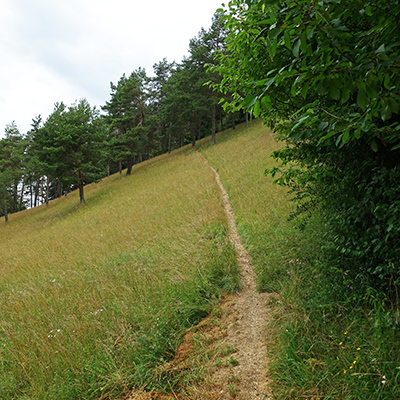
The track becomes narrow as it heads up this short but steep slope.
Photo and text: Don Hitchcock 2018
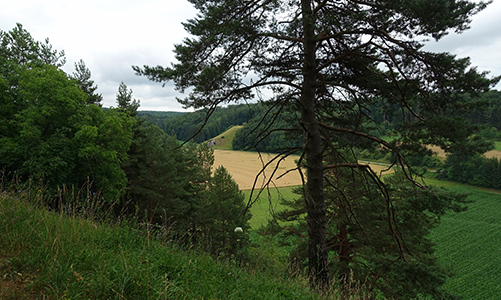
Humans continually visited the Bruder Valley between 16 000 and 13 000 years before the present. This time period, the Magdalenian, takes its name from the rock shelter of l'Abri de la Madeleine in the Dordogne, France.
Visitors to Petersfels and Gnirshöhle left traces behind. Despite the proximity of the two sites, the occupational traces clearly originate from different groups. at Petersfels, a band of several families of reindeer hunters used the site continuously in autumn as a hunting station. At the Gnirshöhle, it appears that a single family probably visited the site several times for short, winter visits.
In more recent time periods, Mesolithic and Bronze Age peoples sporadically visited the valley.
Photo: Don Hitchcock 2018
Text: Notice board beside the track at this point.
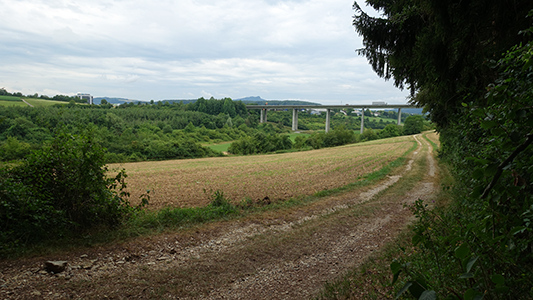
Approaching civilisation once more, though still well within the Bruder Valley.
( Between the bridge across the Bruder Valley a few hundred metres away, and this point, would have been the crucial area for the reindeer to be diverted into following the Bruder Valley to Petersfels instead of the steady climb up to the plateau and their cold weather feeding grounds. From this point the sides of the valley get a lot steeper, making the herding of the reindeer much easier - Don )
During the coldest phase of the last Ice Age 22 000 years ago, a torrent of melt water cut a deep trench into the Tertiary and Jurassic limestone. This massive erosional event opened an ancient, buried system of caves, which was once a coral reef. This part of the landscape is punctuated with the remains of prominent rock formations such as the Petersfels cave, because the petrified coral reefs are less prone to erosion than the surrounding sediments.
In the western part of the valley, a massive gravel deposit was left behind by the retreat of the glaciers as a moraine. Ice age people probably made use of several small, natural springs in the slopes across from Petersfels for their water supplies.
Photo: Don Hitchcock 2018
Text: Notice board beside the track a little further on from this spot.
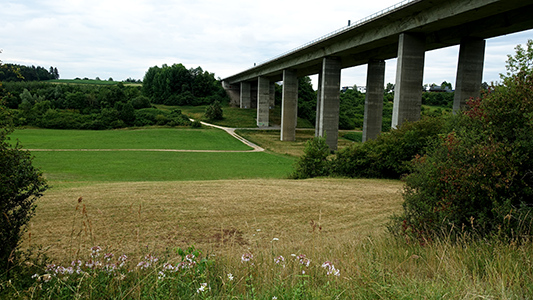
At this point walkers could probably make their way back to their parked cars by crossing the Bruder Valley by taking a short cut across the mown pasture and following the dirt road in the distance.
Photo: Don Hitchcock 2018
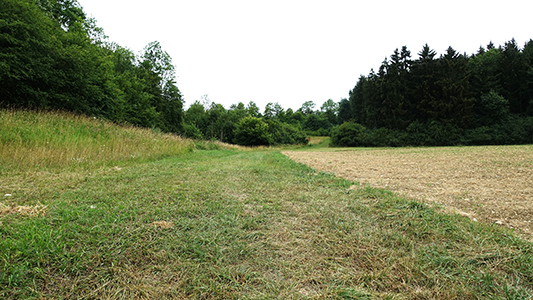
Alternatively, they could continue to the junction and turn left down the mown strip under the motorway and get back to their cars.
A mobile phone and google maps or similar is a big help in these situations.
In my case, I turned right at the minor road / mown strip and headed back up the hill, shown here, to my hotel.
Photo: Don Hitchcock 2018
References
- Adam, K., Kurz, R., 1980: Eiszeitkunst im süddeutschen Raum, Theiss.
- Albrecht, G., Berke H., Poplin F., 1983: Saugetierreste vom Petersfels P1 und Petersfels P3, Grabung 1974–1976, in Naturwissenschaftliche Untersuchungen an Magdalénien-Inventaren vom Petersfels, Grabungen 1974–1976, ed. G. Albrecht, H. Berke and F. Poplin, pp. 63–127. Tübingen: Verlag Archaeologica Venatoria.
- Drössler, R., 1967: Die Venus der Eiszeit Gebundene Ausgabe: 268 Seiten Verlag: Prisma-Verl.; Auflage: [1. - 5. Tsd.] (1967)
- Eriksen, B., 2002: Fossil Mollusks and Exotic Raw Materials in Late Glacial and Early Find Contexts: A Complement to Lithic Studies, in: Fisher LE, Eriksen BV, editors, Lithic raw material economy in late glacial and early postglacial western Europe. Oxford: Bar International Series; 2002. pp. 27–52.
- Marshack, A., 1972: The Roots of Civilization: the Cognitive Beginning of Man’s First Art, Symbol and Notation New York, McGraw-Hill
- Mauser, P., 1968: Finds of the Paleolithic (Petersfels near Bittelbrunn, Ldkrs. Konstanz), Archaeological News from Baden, Vol. 1 (1968), DOI: https://doi.org/10.11588/anb.1968.0.44194 URN: http://nbn-resolving.de/urn:nbn:de:bsz:16-anb-441940 (PDF) Released 2018-02-05
- Murray, N., 1993: The behavioural ecology of reindeer (Rangifer tarandus) during the last glaciation in Britain and its implications for human settlement, subsistence and mobility., Ph.D. thesis, University of Edinburgh, 1993.
- Müller-Beck, H. and Albrecht, G. (Ed.), 1987: Die Anfänge der Kunst vor 30000 Jahren Theiss: Stuttgart.
- Nitecki M., Nitecki D., 2013: The Evolution of Human Hunting, Springer Science & Business Media, 11 Nov 2013 - Social Science - 476 pages
- Nübling V., 1999: Die Venusstatuetten vom Petersfels, https://journals.ub.uni-heidelberg.de/index.php/nbdpfbw/article/view/12932, DOI: https://doi.org/10.11588/nbdpfbw.1999.3.12932, Vol. 28 No. 3 (1999)
- Peters, E., 1930: Die altsteinzeitliche Kulturstätte Petersfels Augsburg, B. Fiolser, 1930. Large 4to. 75 pp. text, 27 plts., 10 textfigs. and 1 map.
- Poplin, F., 1976: Les Grands Vertévrés de Gönnersdorf: Fouilles 1968 Weisbaden: Franz Steiner Verlag.
- Rau, S., Naumann D., Barth M., Mühleis Y., Bleckmann C., 2009: Eiszeit: Kunst und Kultur, Thorbecke, 2009, 396p. ISBN: 978-3-7995-0833-9
- Sturdy, D., 1972: Reindeer Economies in Late Ice Age Europe, Ph. D. Thesis, University of Cambridge.
- Sturdy, D., 1975: Some reindeer economies in prehistoric Europe, in: Higgs, E. (ed)., Palaeoeconomy, 55-95. Cambridge: Cambridge University Press.
- Weniger, G., 1982: Wildbeuter und ihre Umwelt, Tübingen: Archaeologica Venatoria.
- Weniger, G., 1987: Magdalenian settlement and subsistence in south-west GermanyProceedings of the Prehistoric Society, 53, 293-307
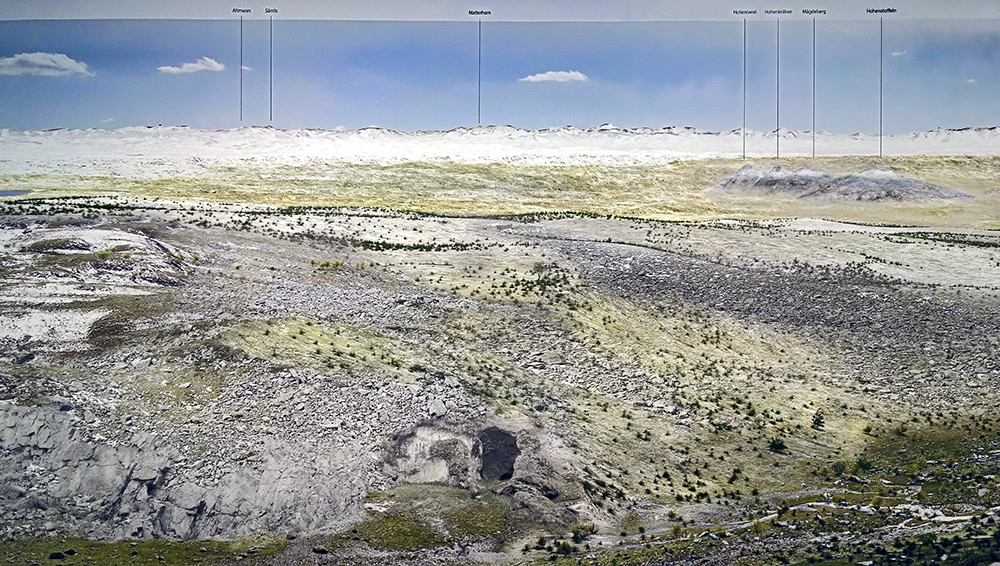

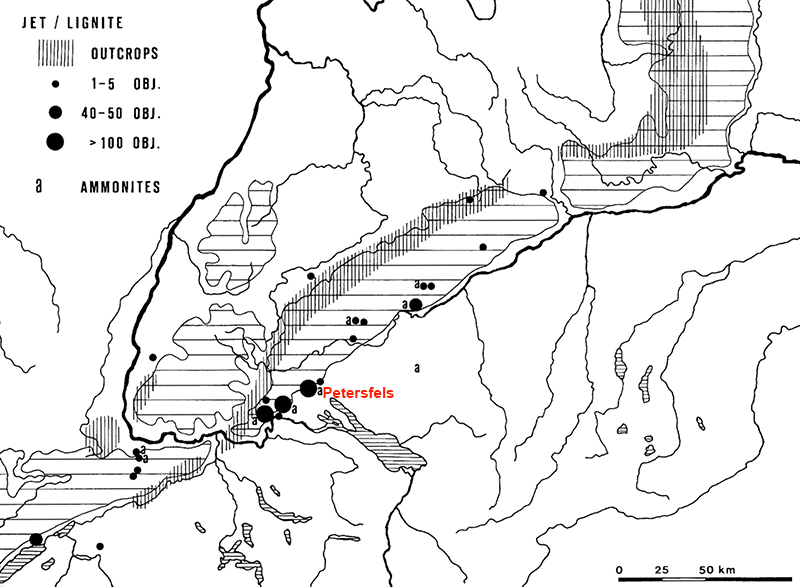
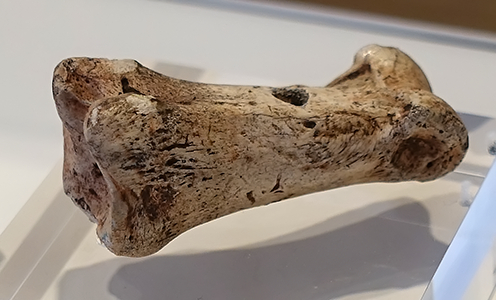
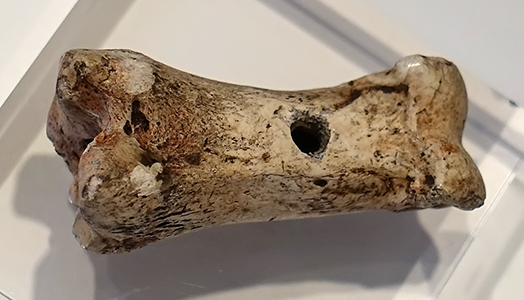
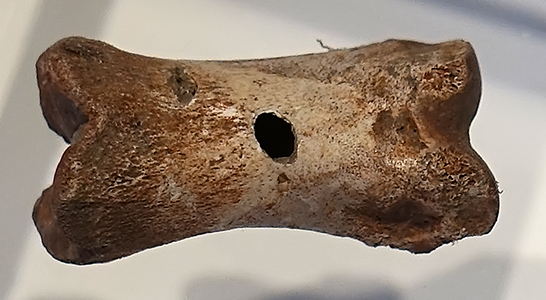


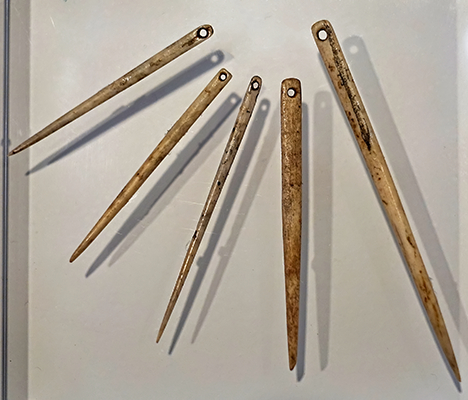

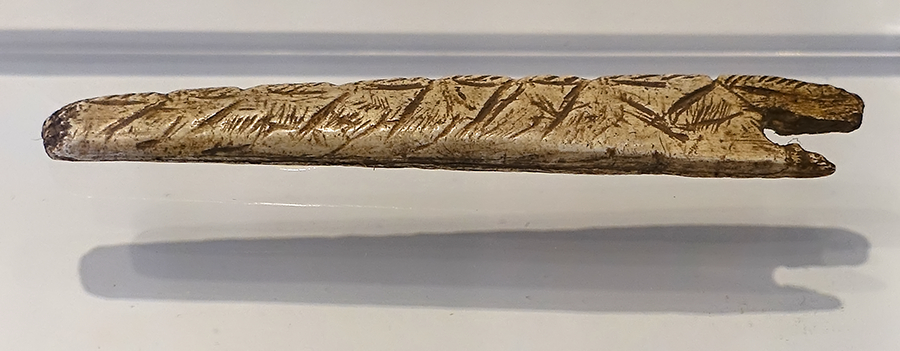







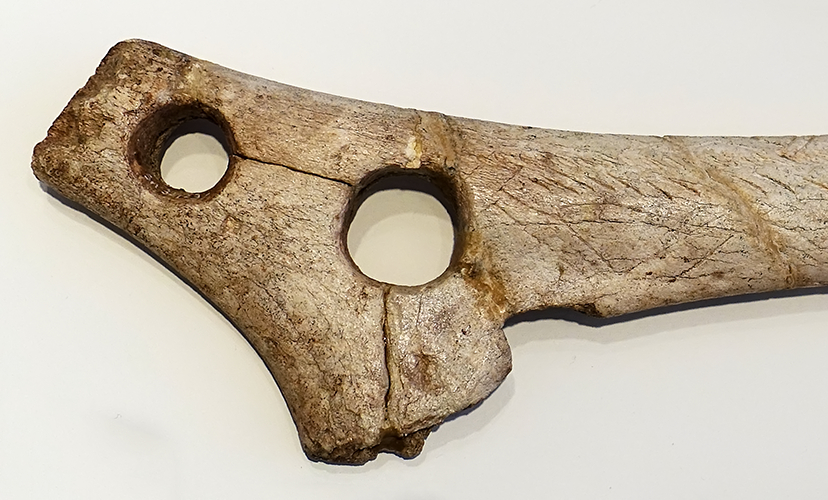

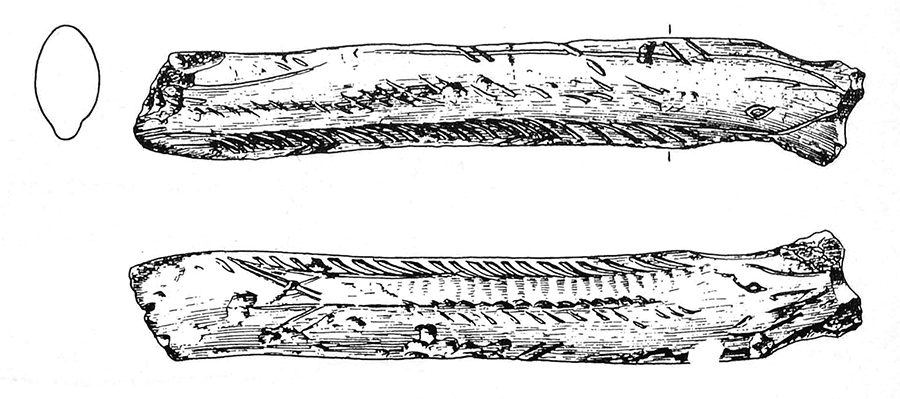
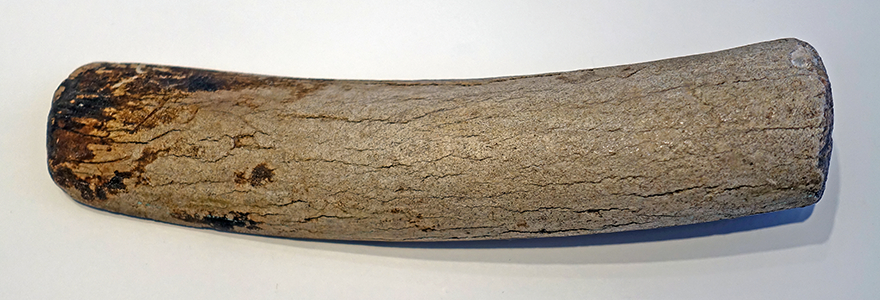



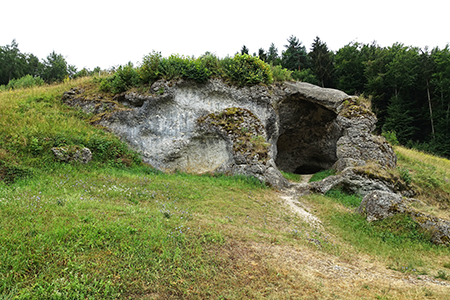
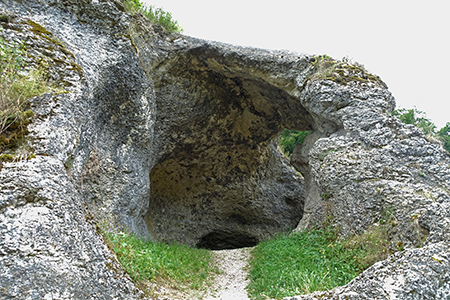
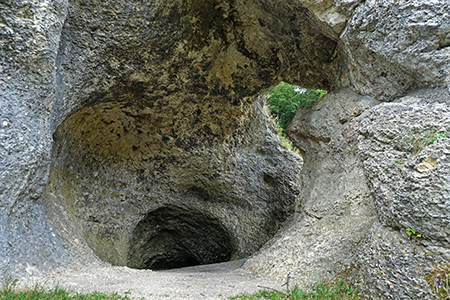
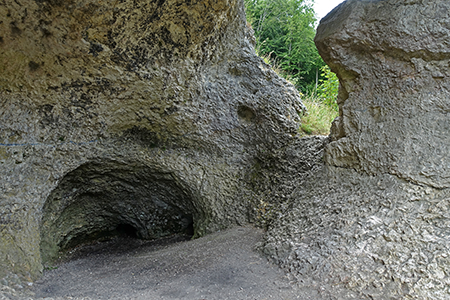
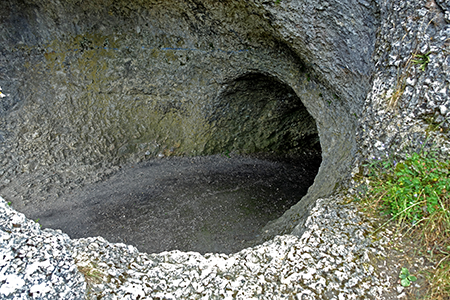
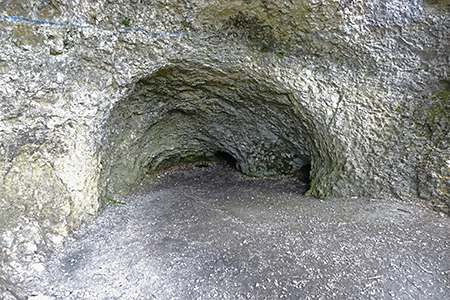




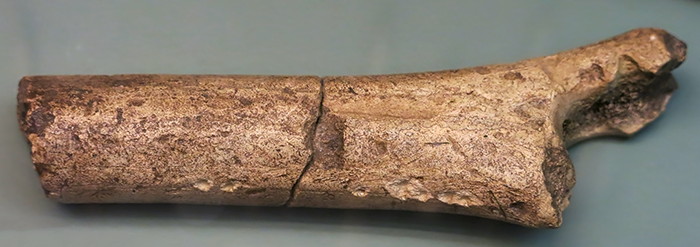

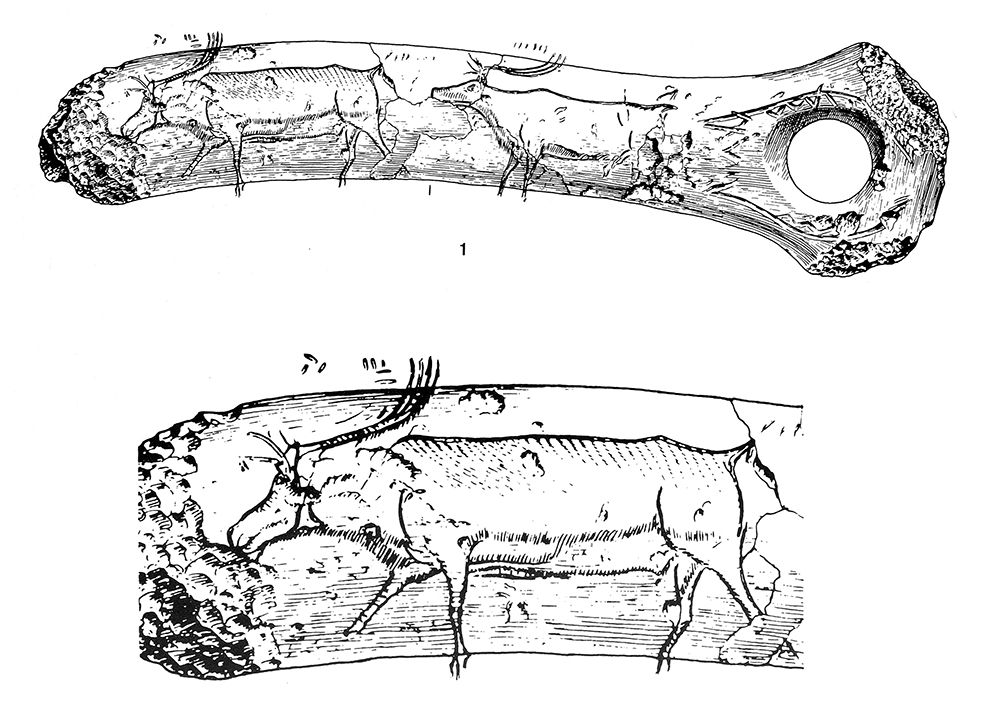

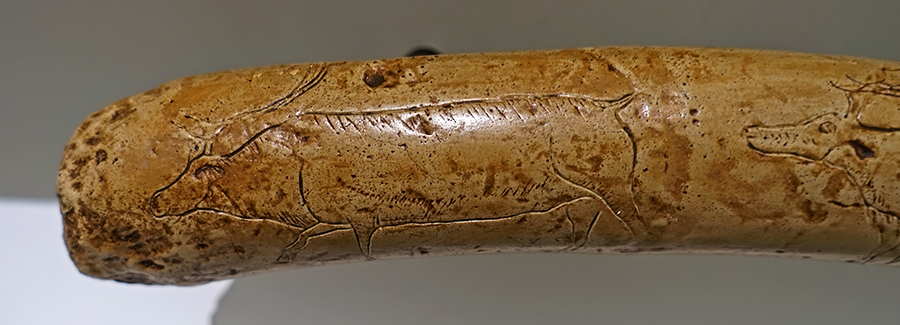
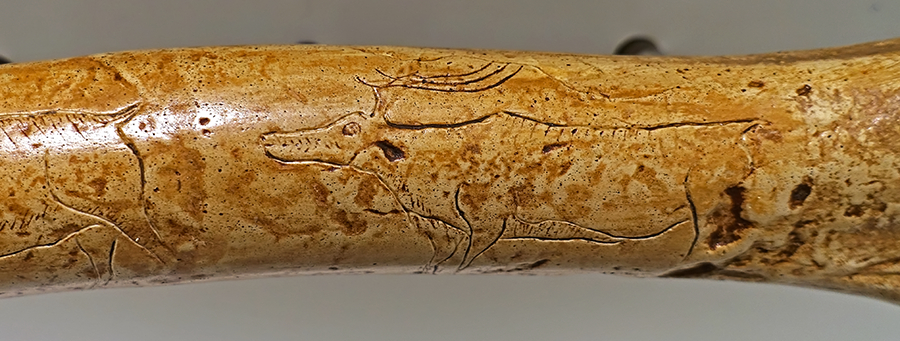
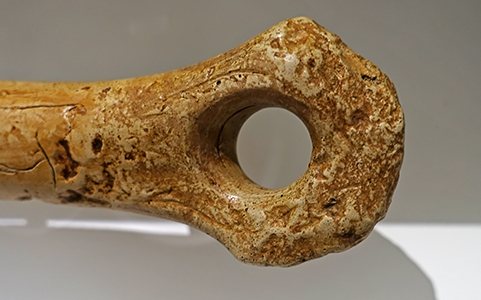

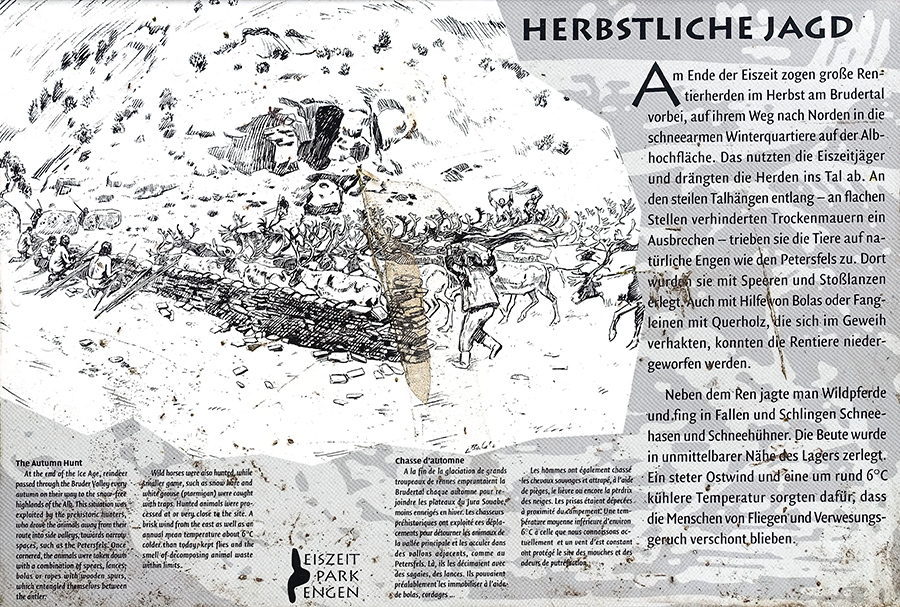
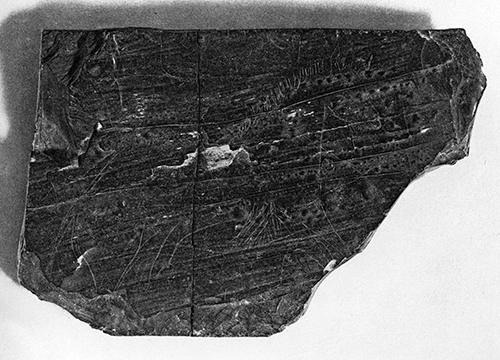
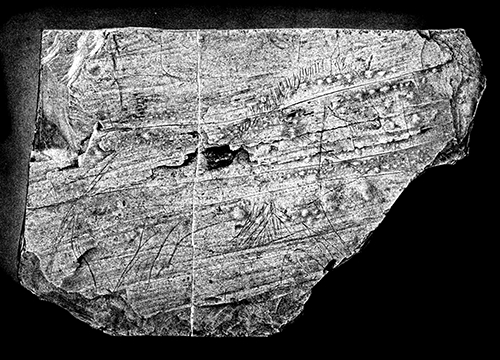
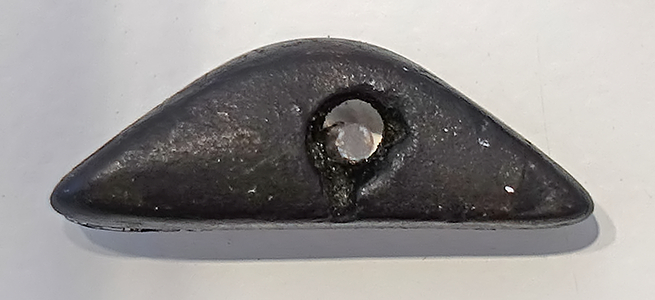
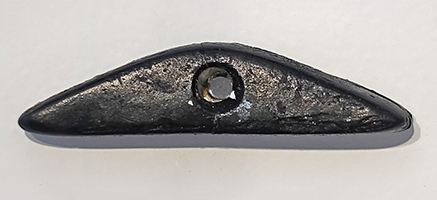
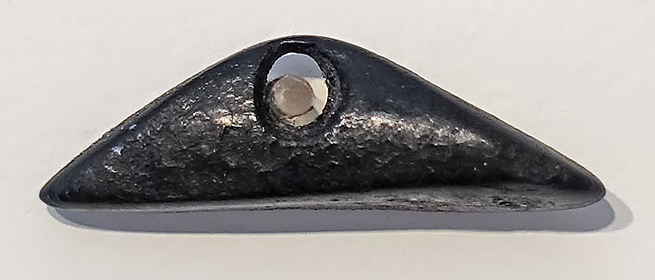
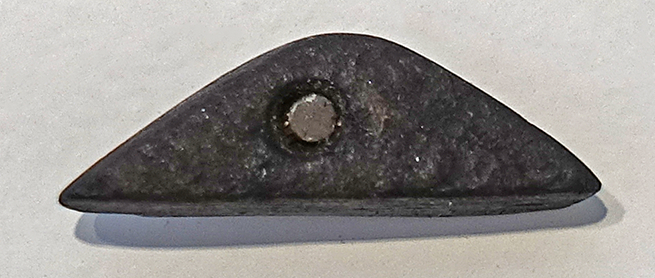
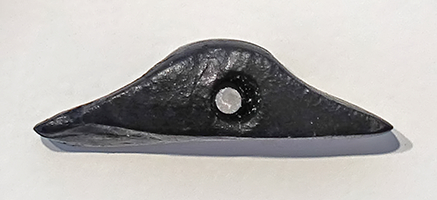
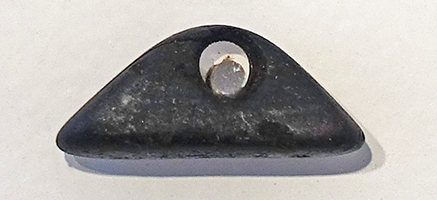
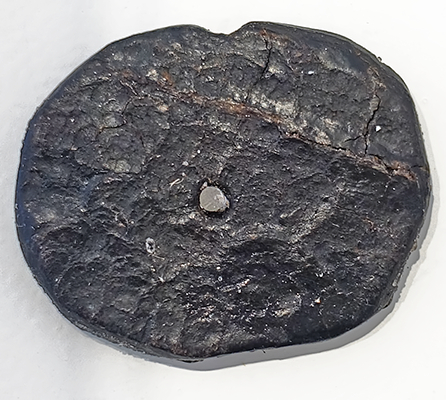
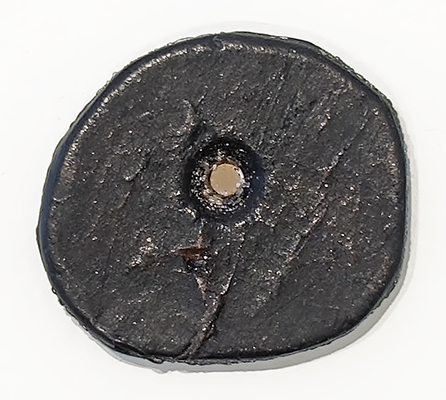
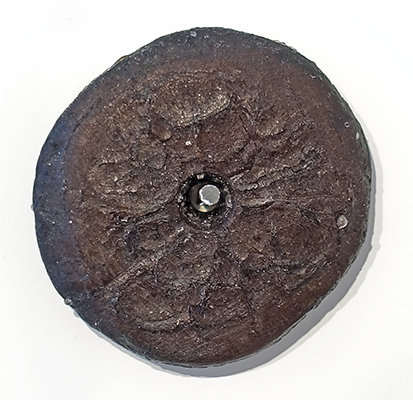
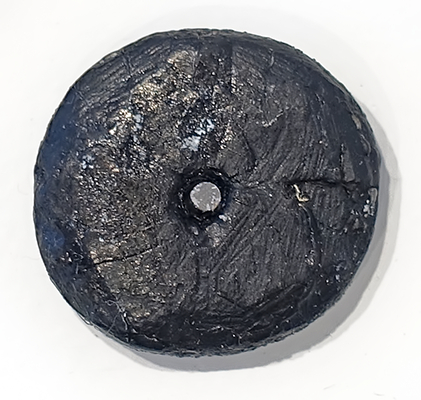
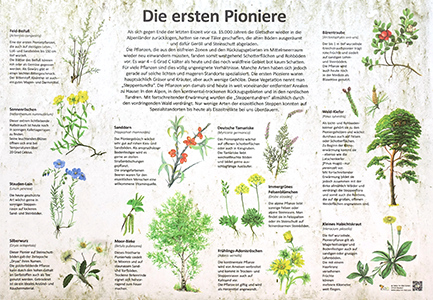
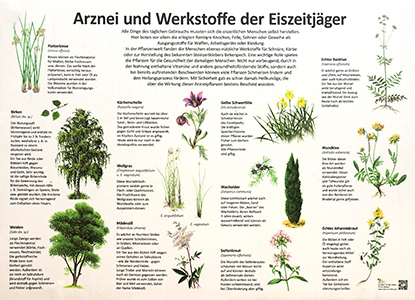
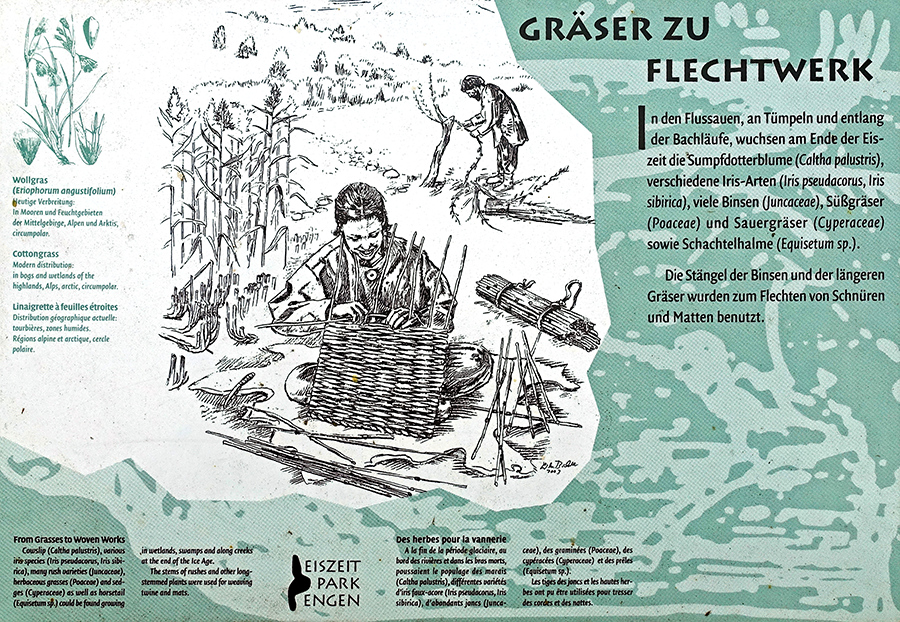
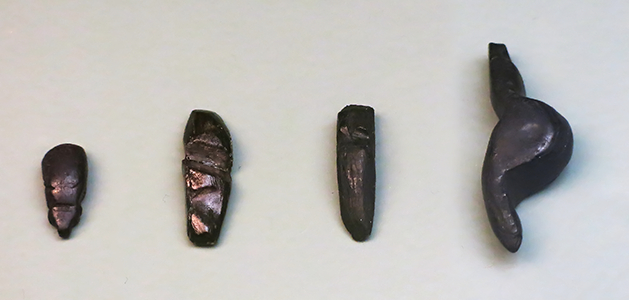
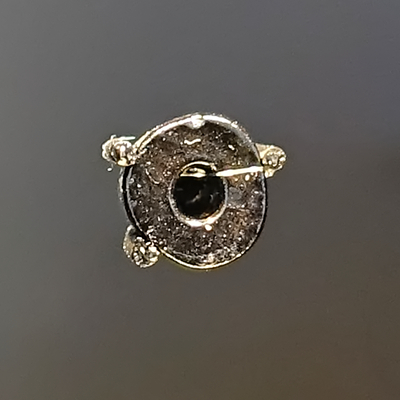
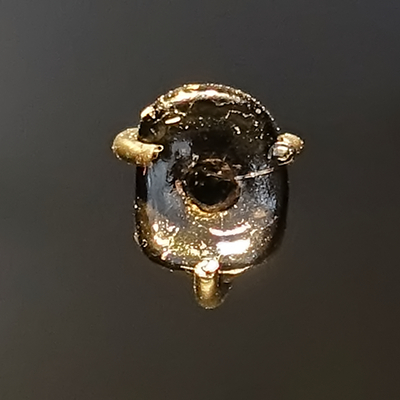
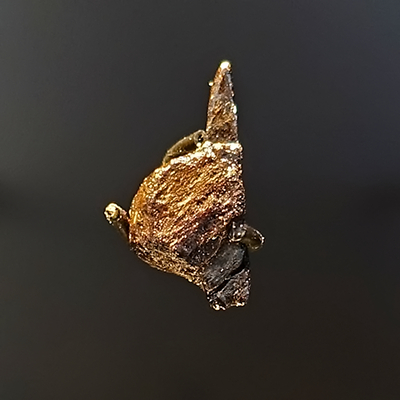
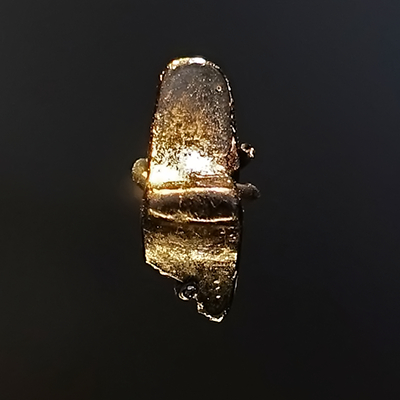
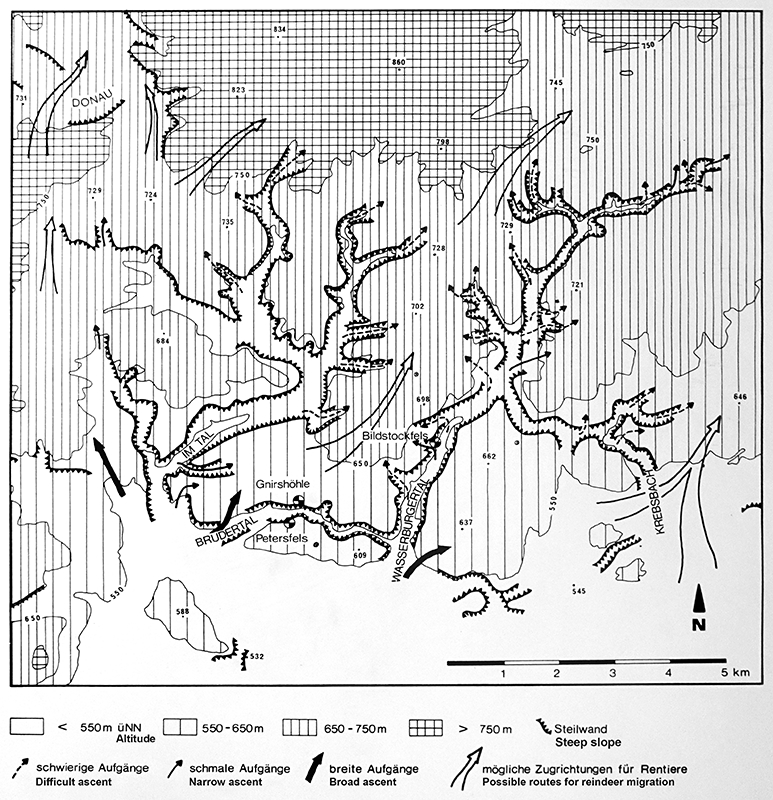
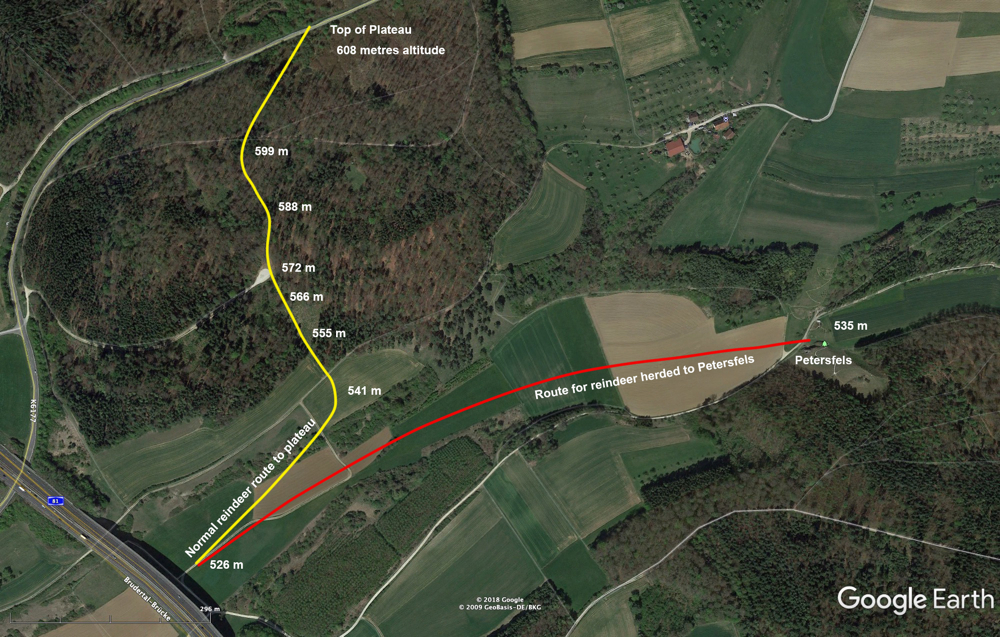
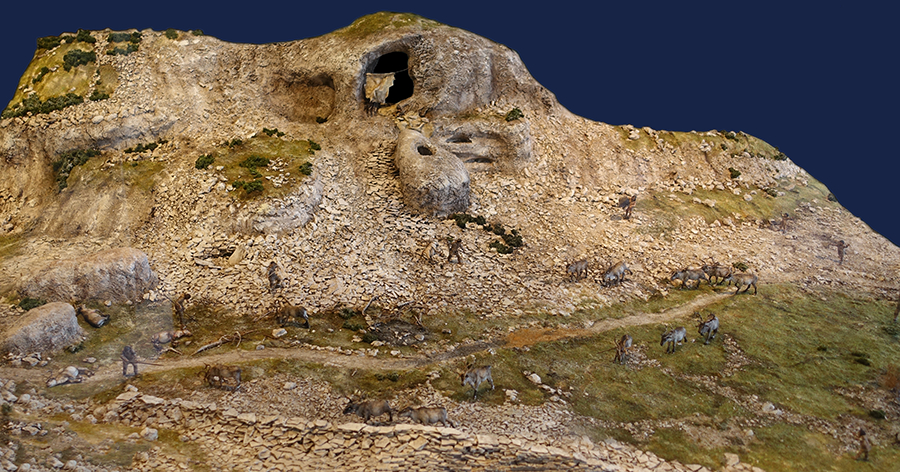
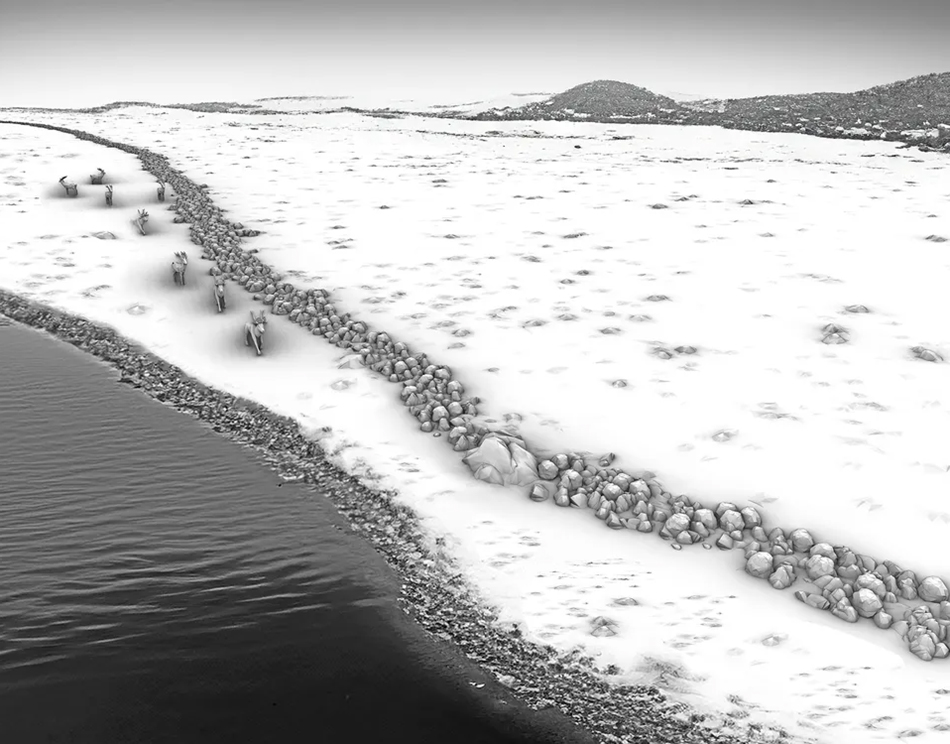
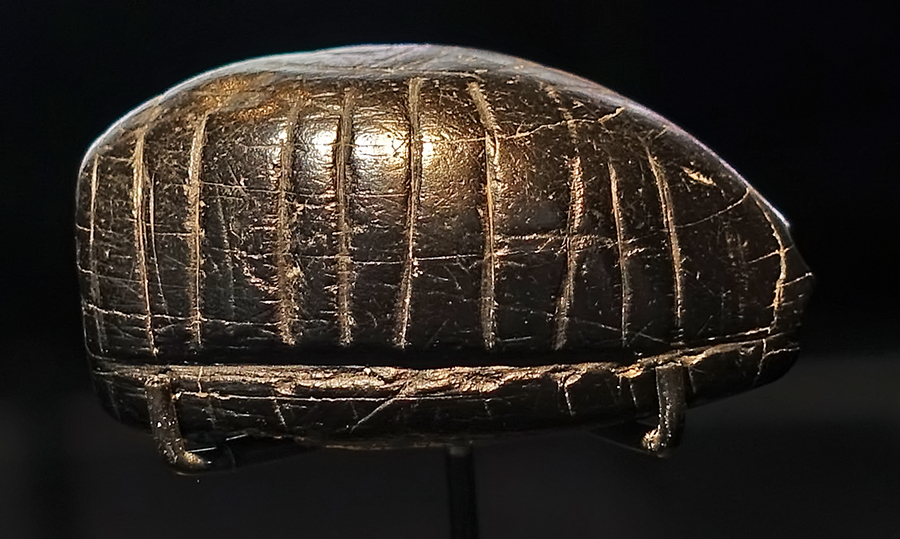
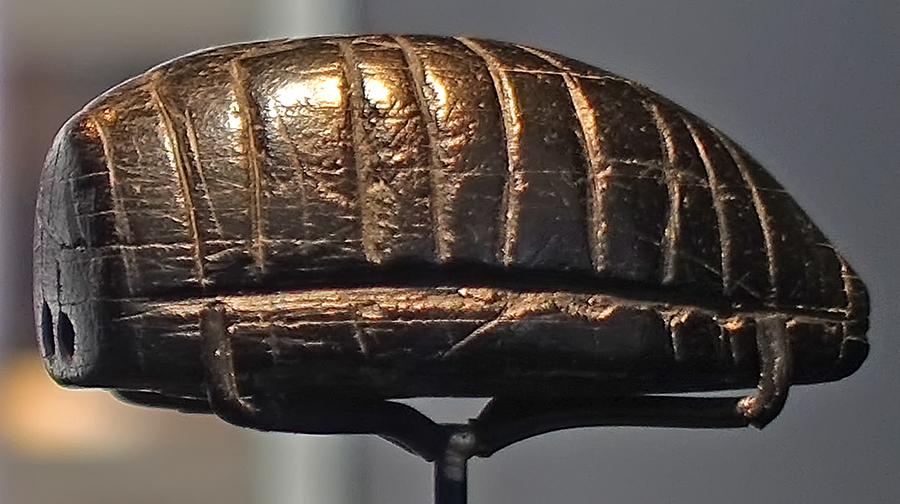

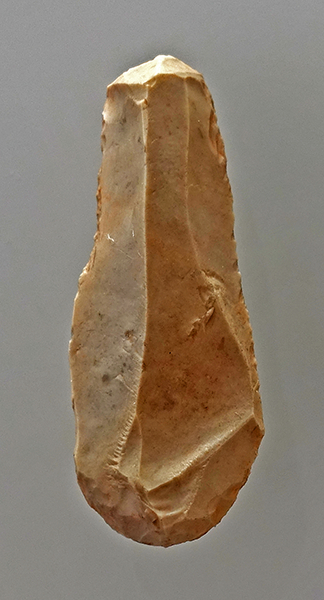
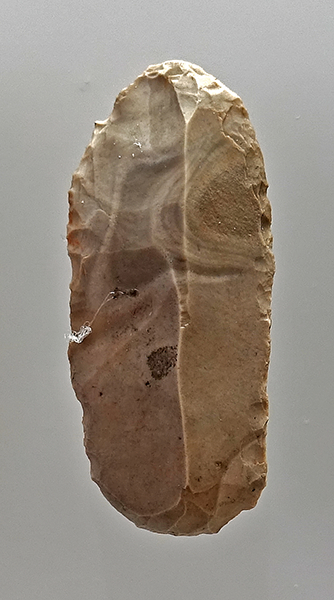
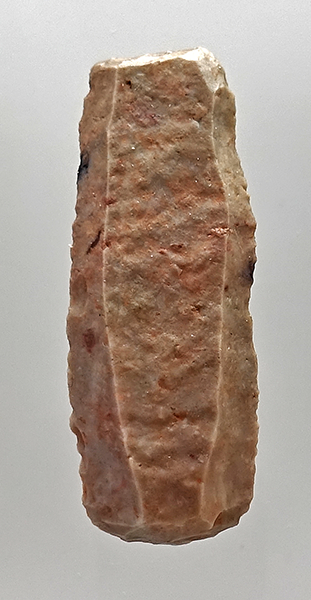
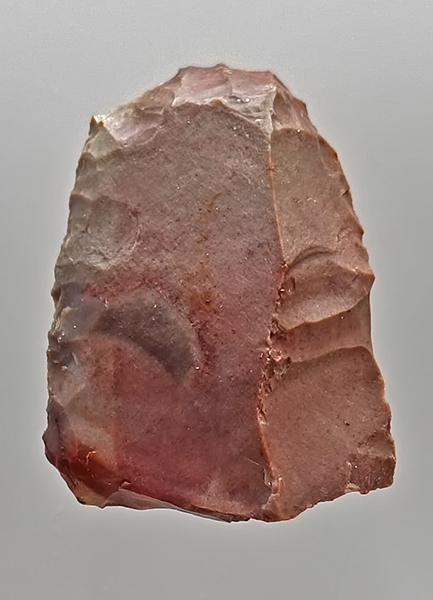
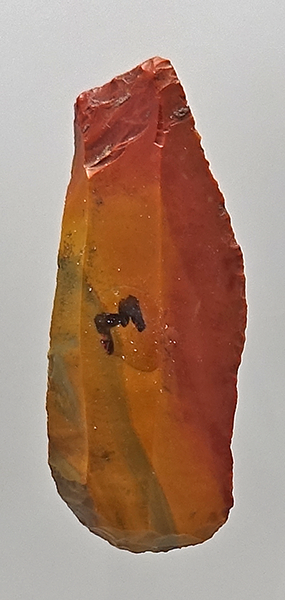
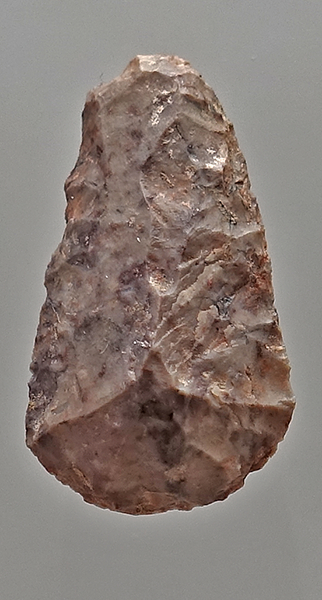
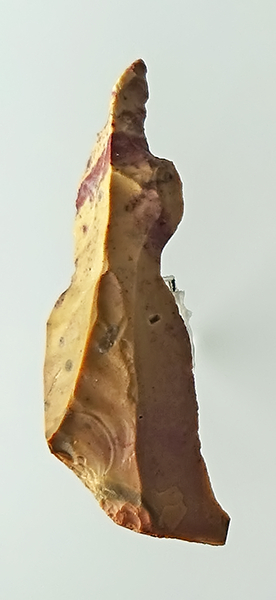
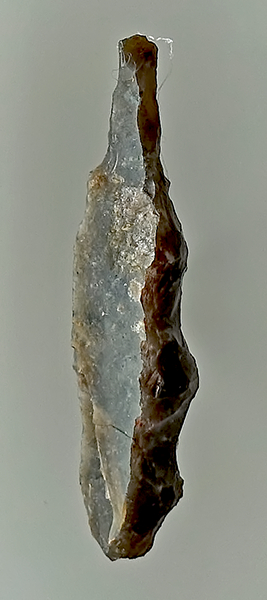
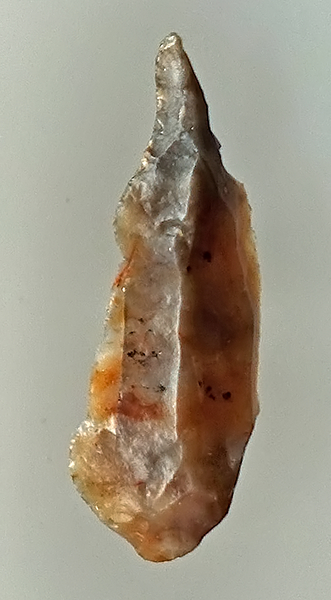
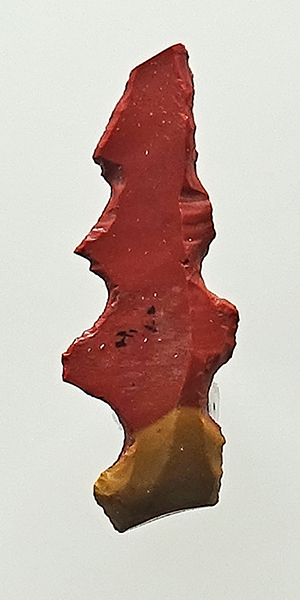
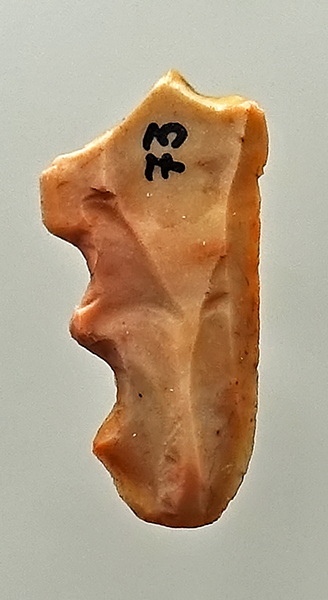
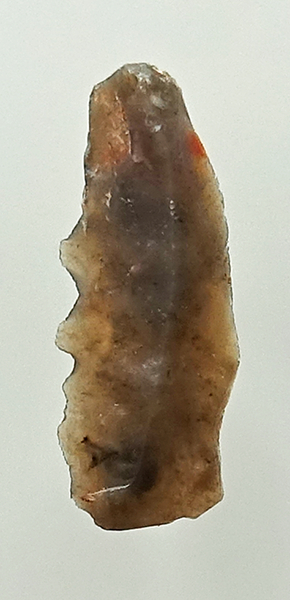




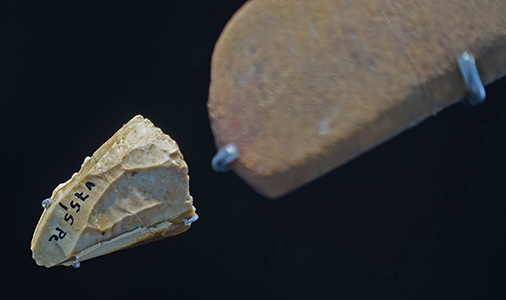
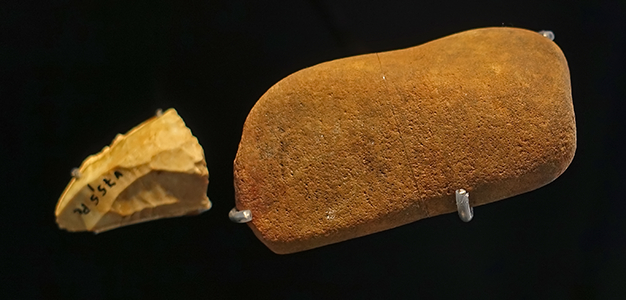
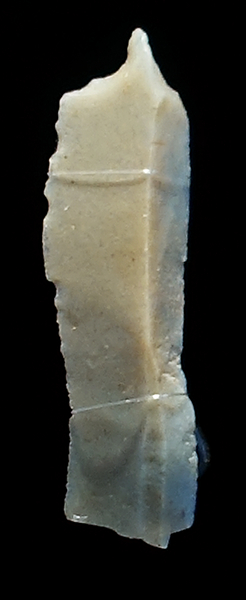

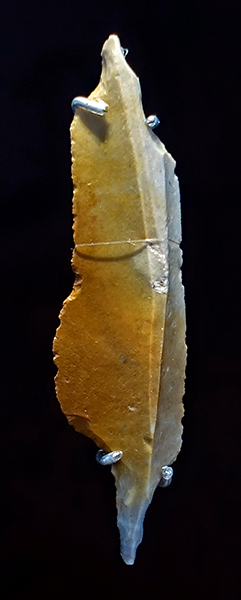
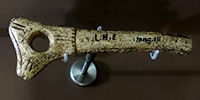 Bâtons Percés - Identified as early as 1866, the pierced baton has produced no less than 37 hypotheses regarding its use. Among the most often expressed uses was that of a spear head straightener, in combination with heat from a fire. On some of the artefacts traces of use, sometimes two by two, evoke the twisting of a cord through the hole. This page includes material from an important paper on the subject by Rigaud.
Bâtons Percés - Identified as early as 1866, the pierced baton has produced no less than 37 hypotheses regarding its use. Among the most often expressed uses was that of a spear head straightener, in combination with heat from a fire. On some of the artefacts traces of use, sometimes two by two, evoke the twisting of a cord through the hole. This page includes material from an important paper on the subject by Rigaud.